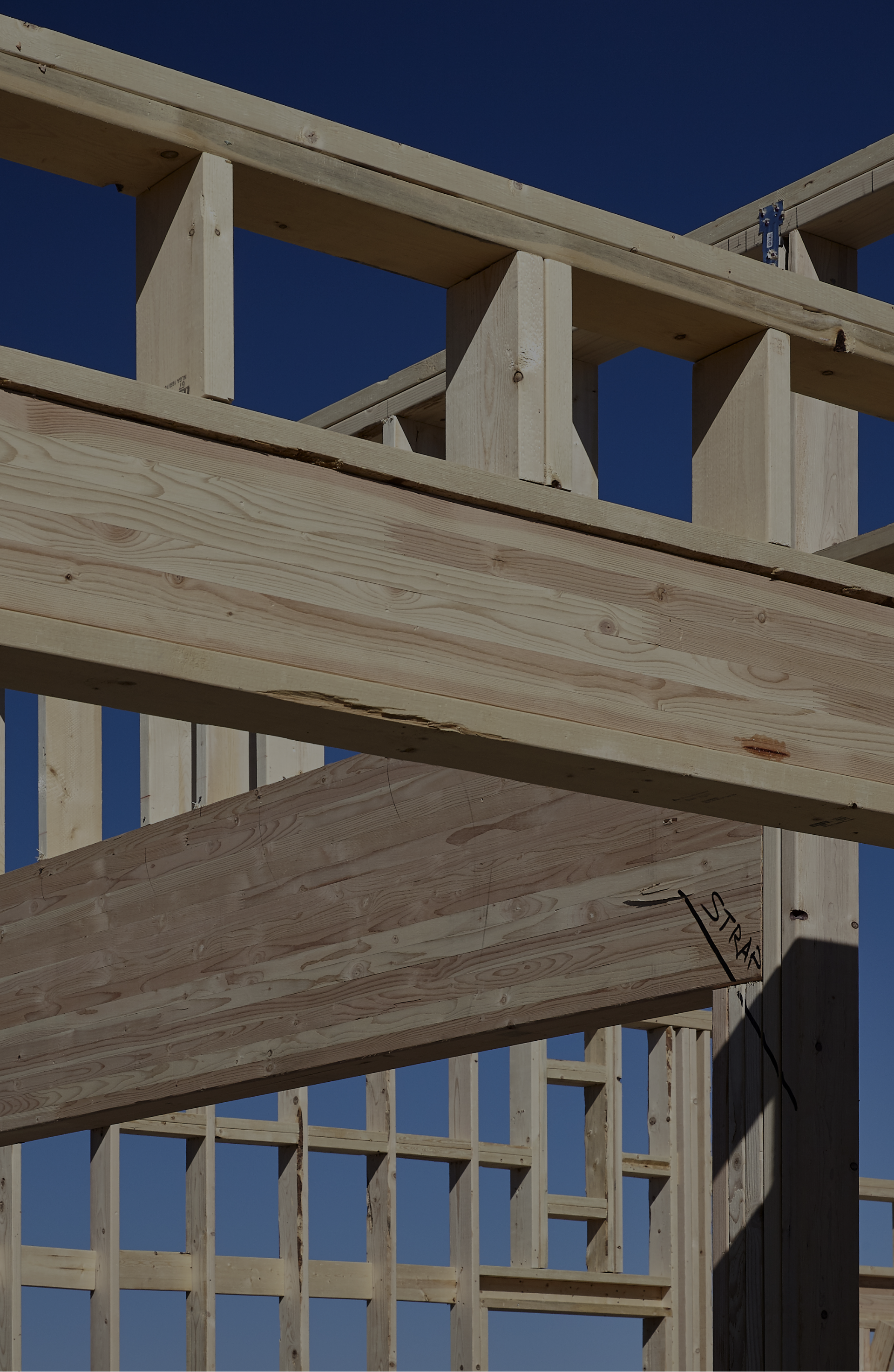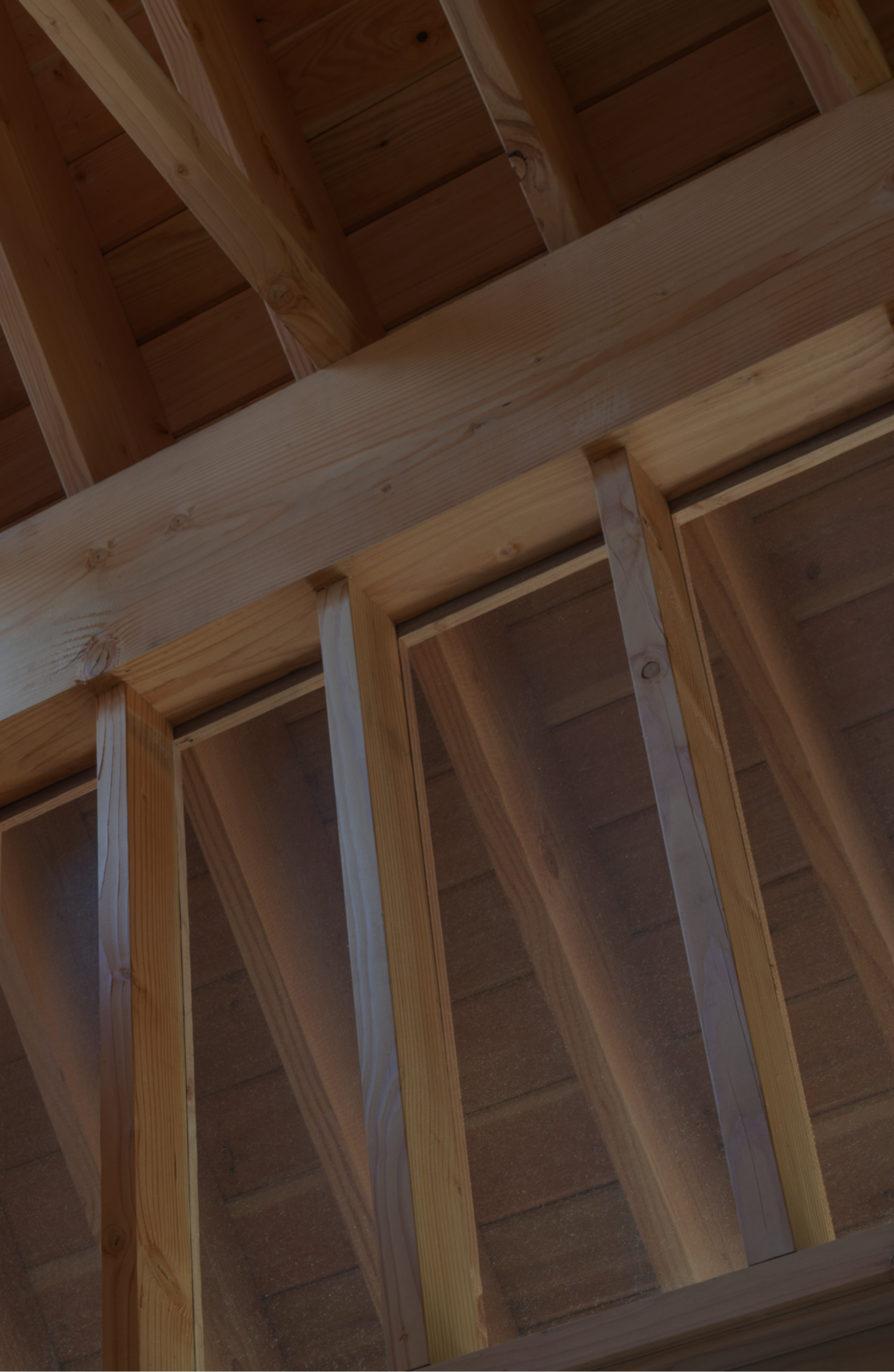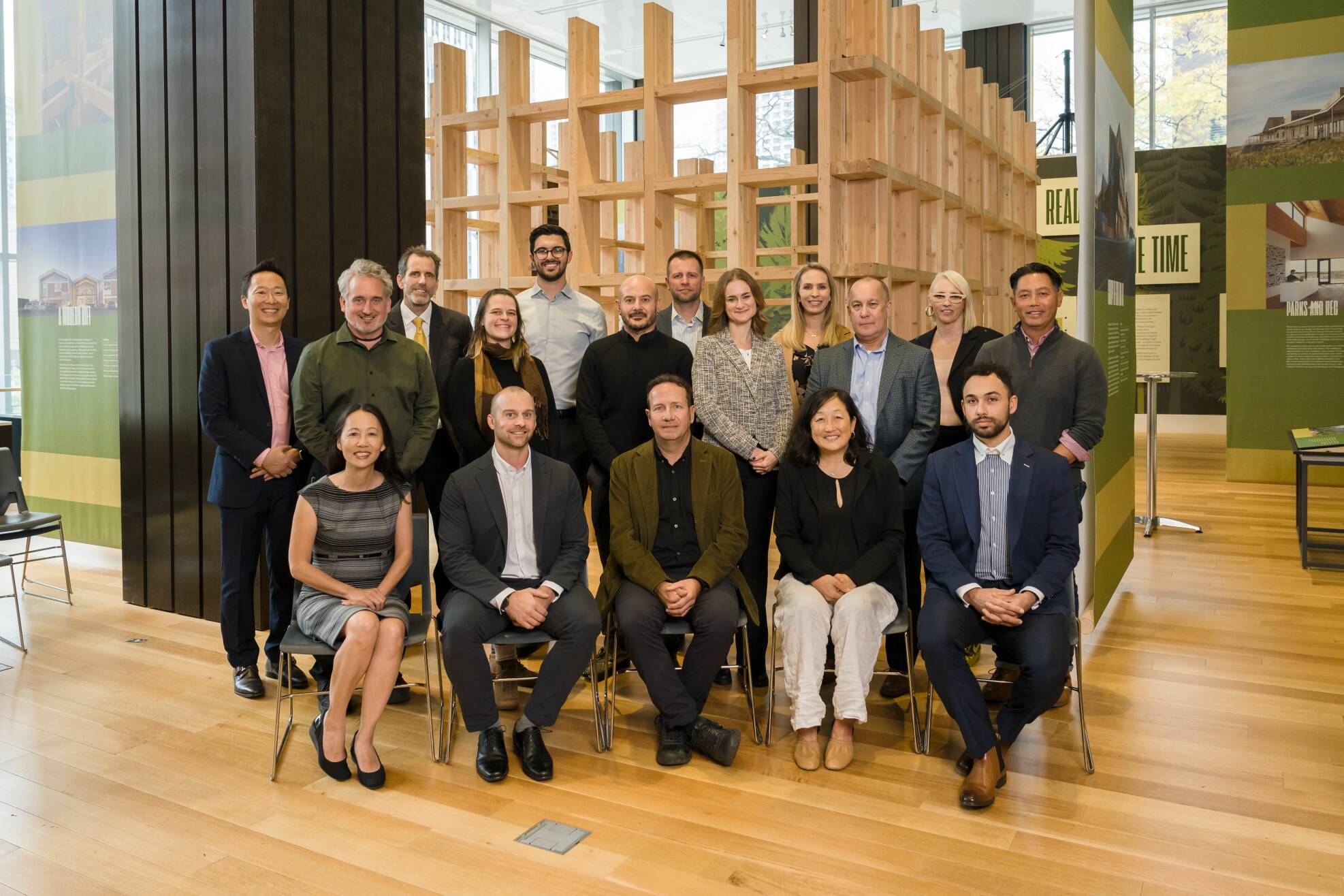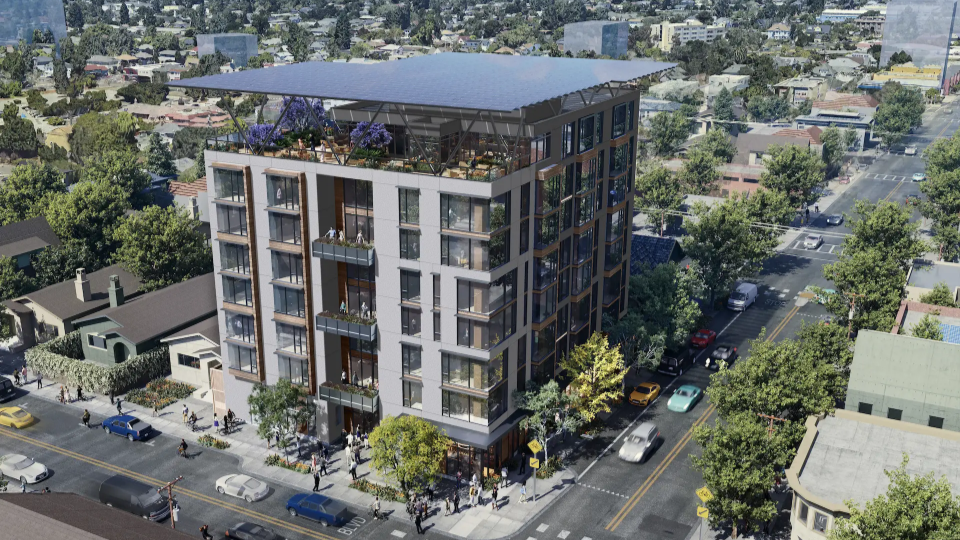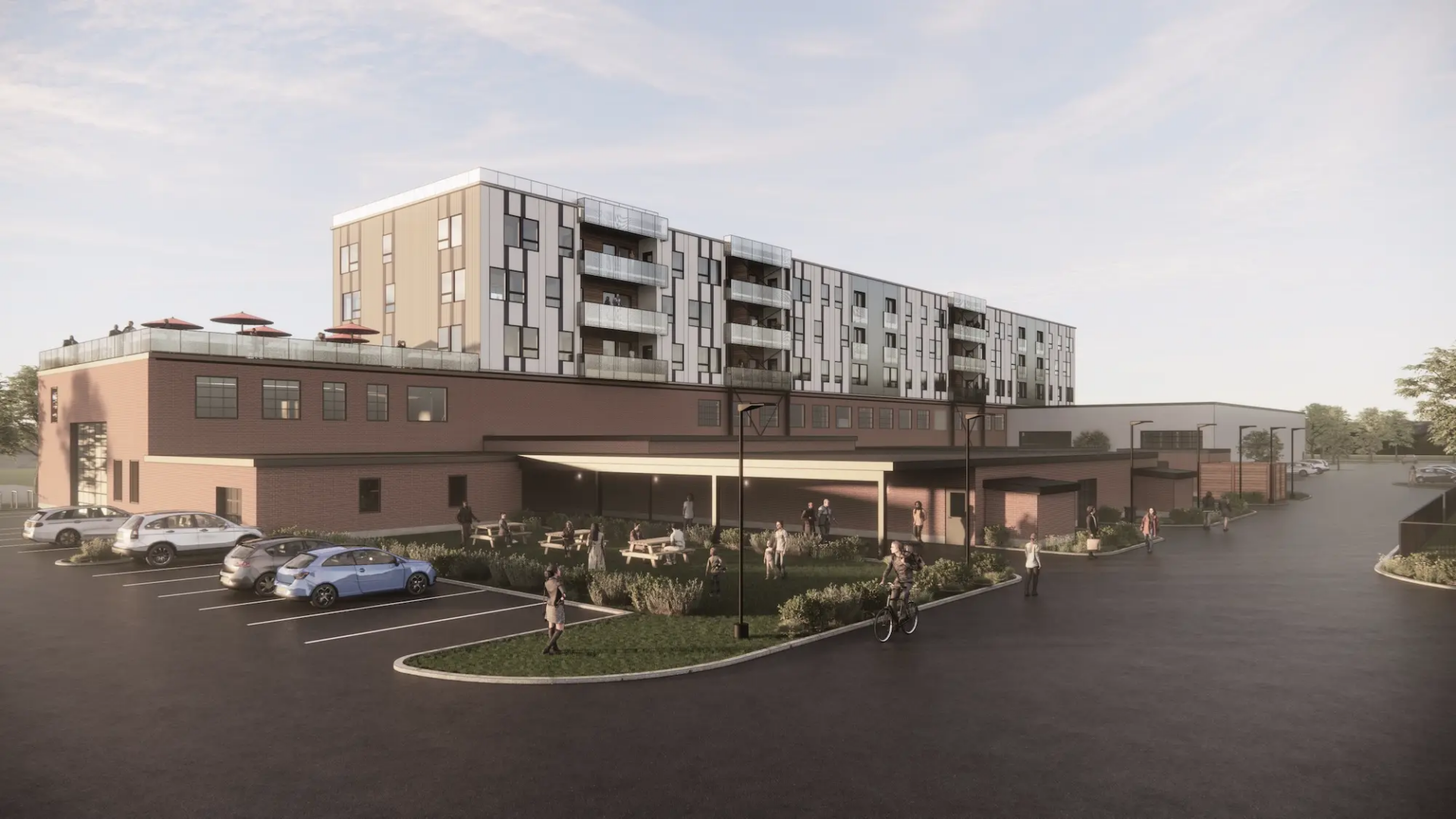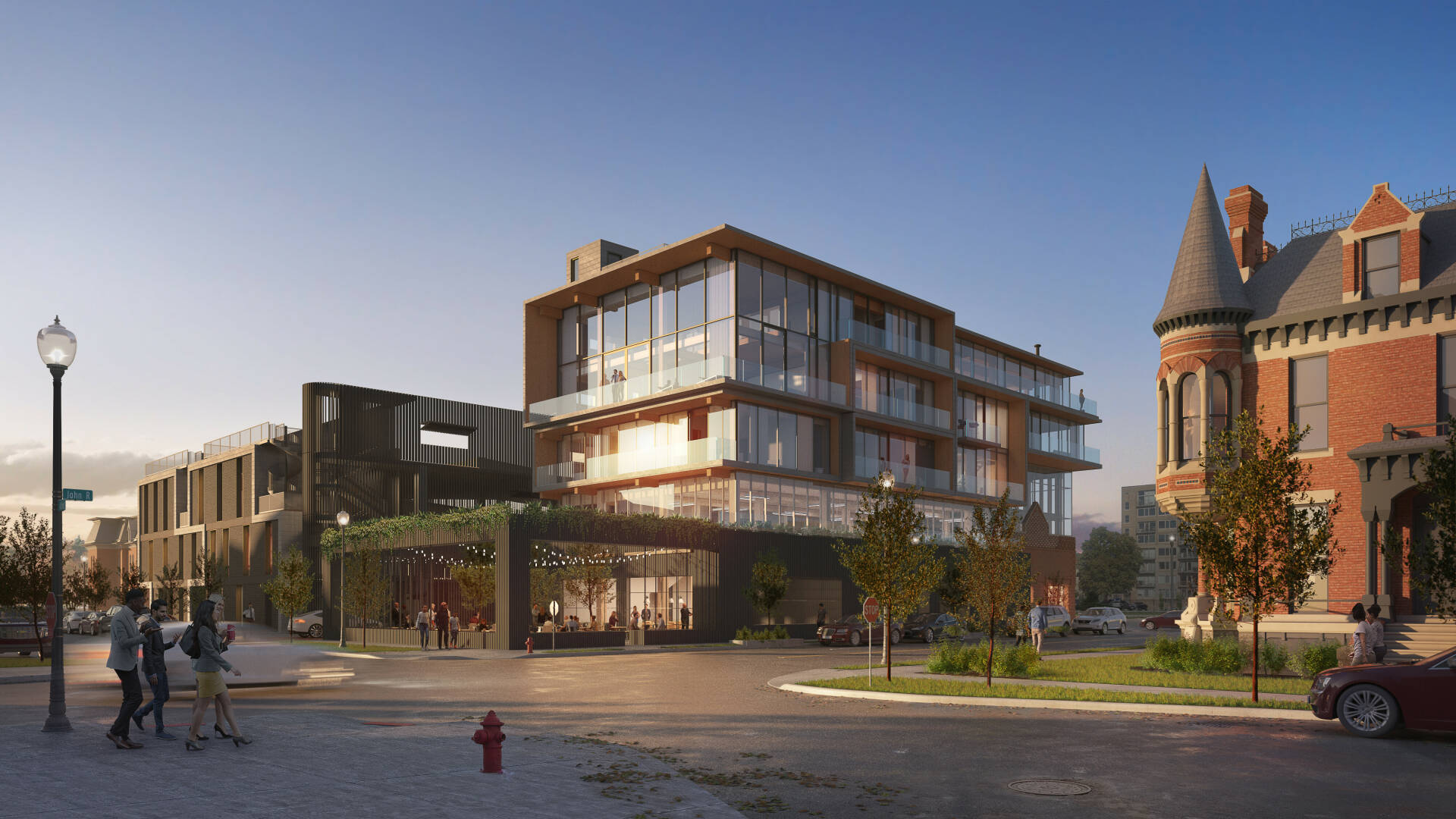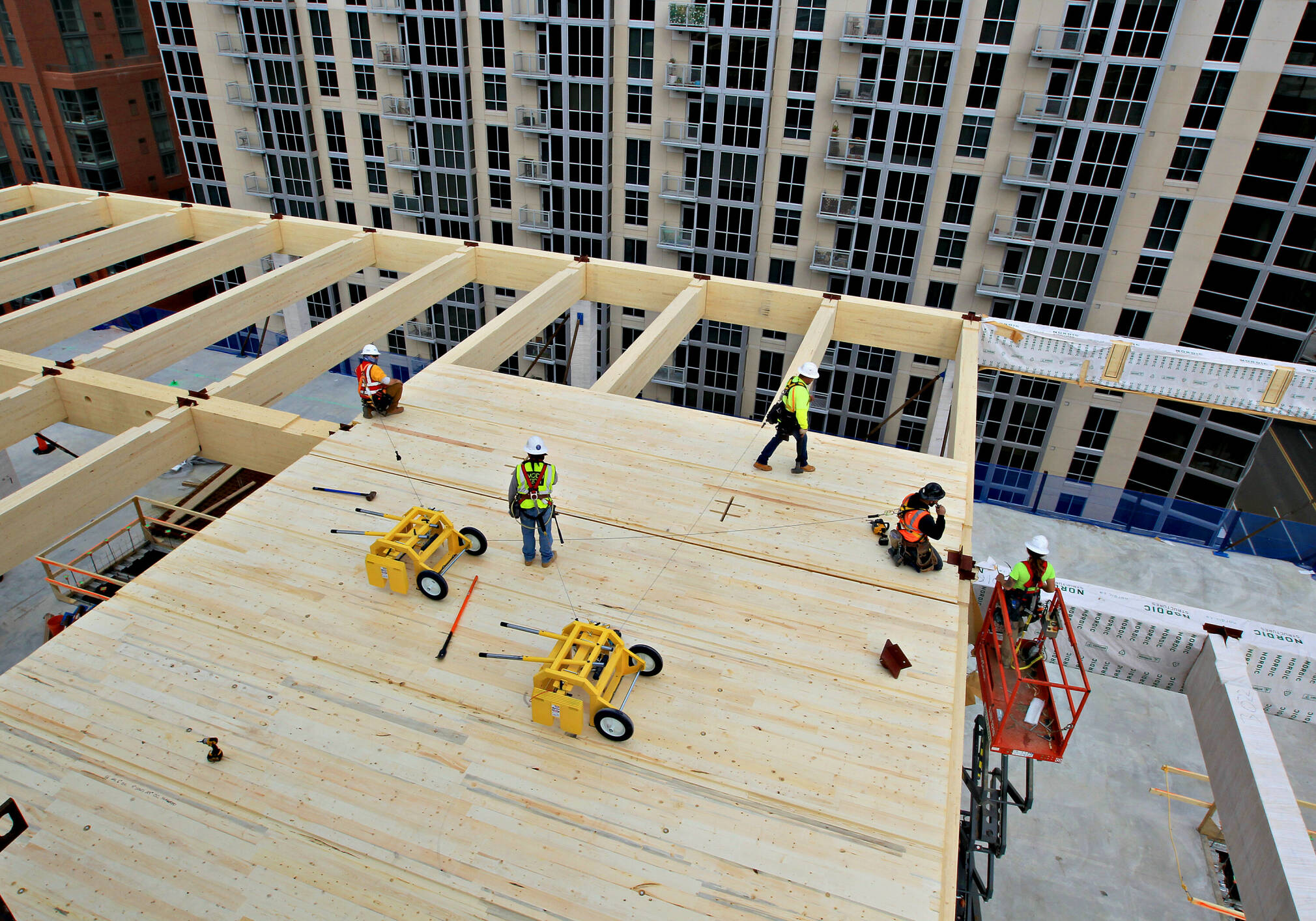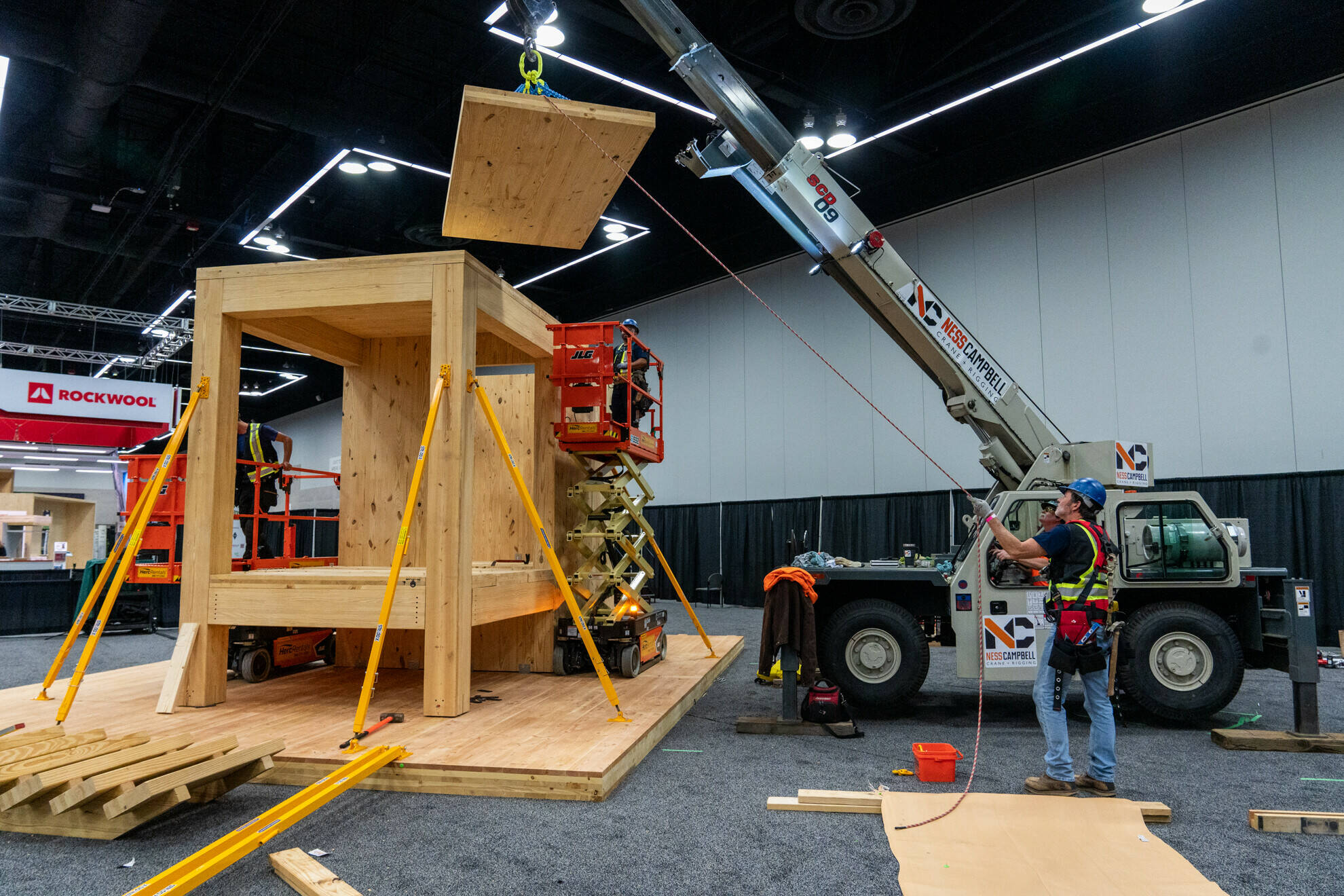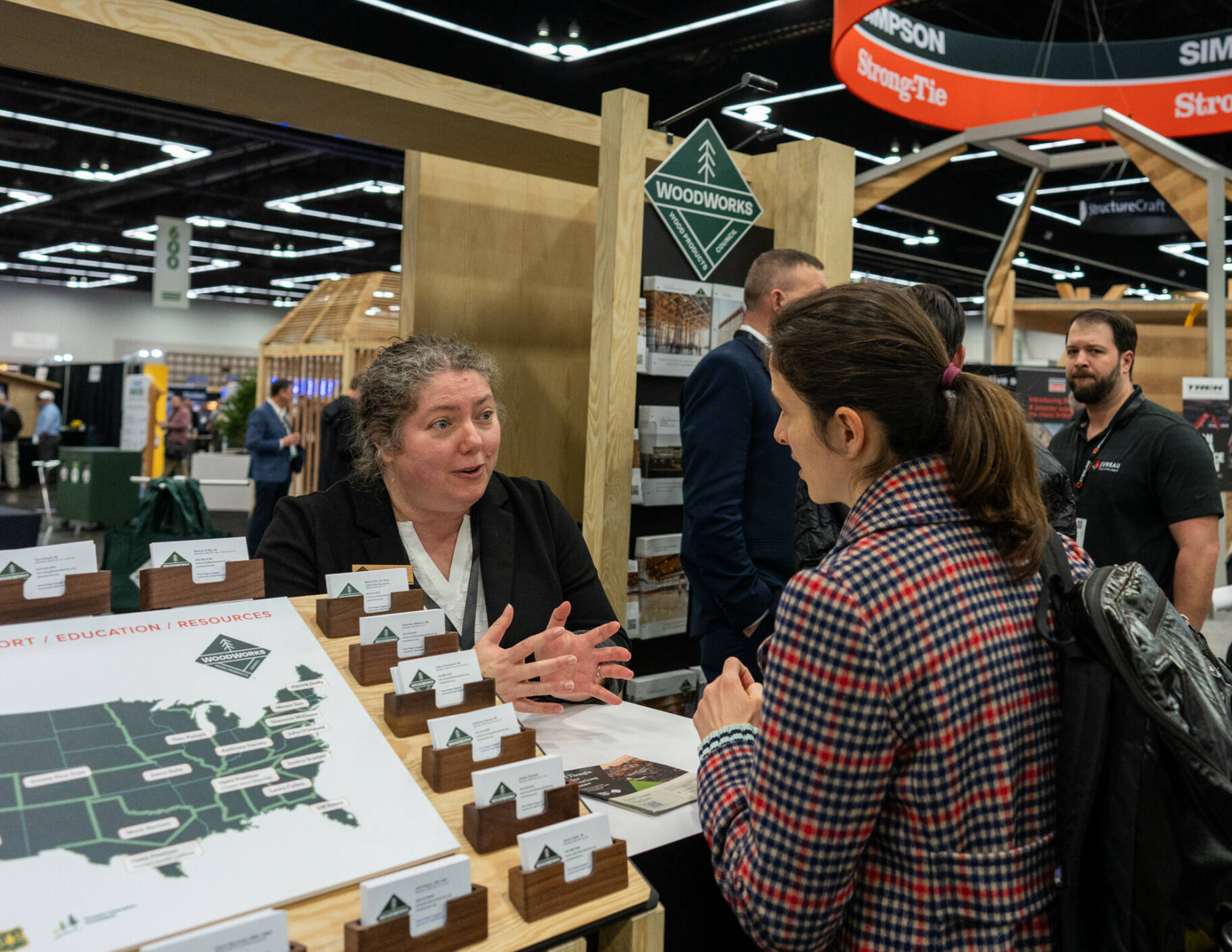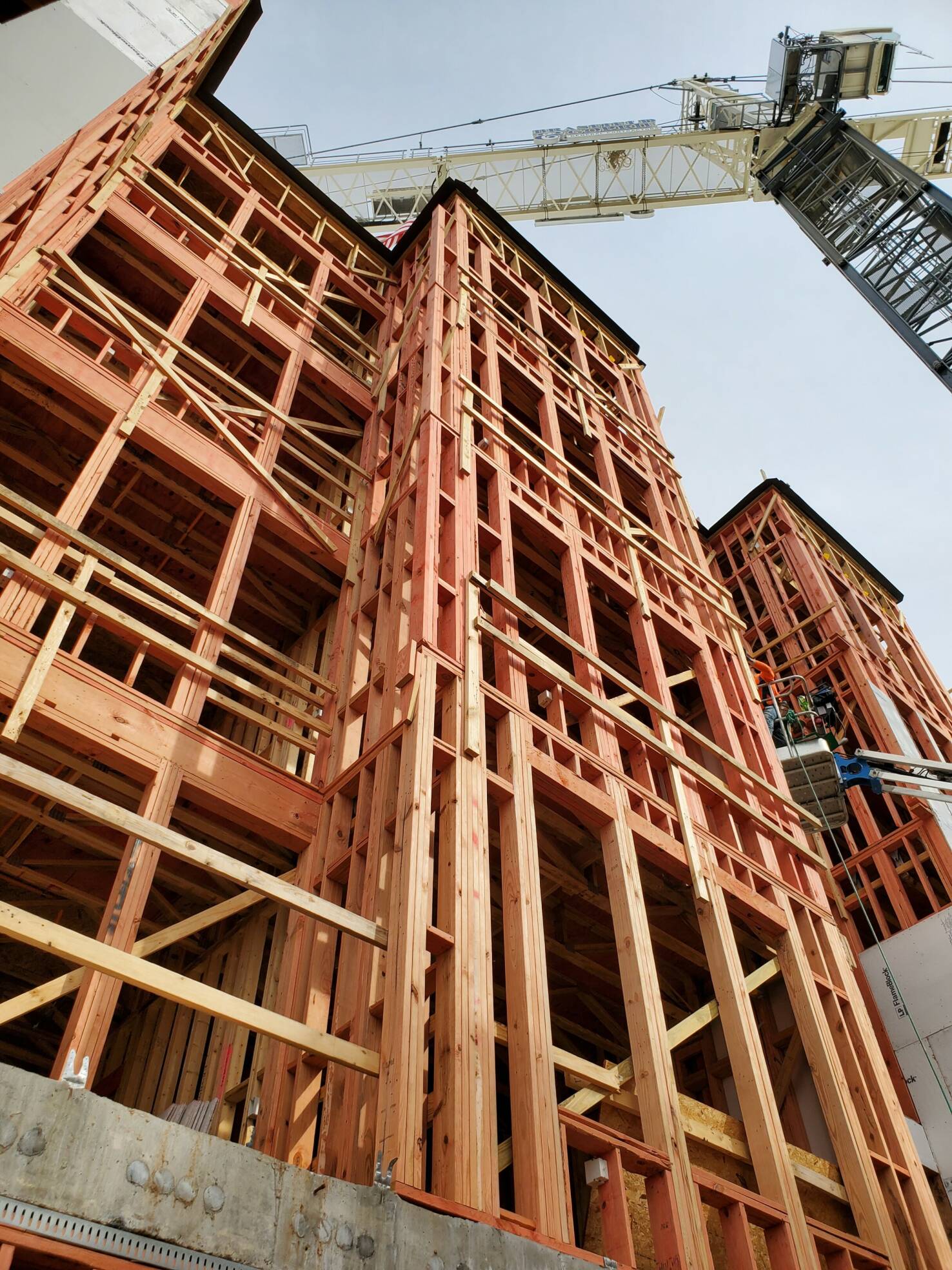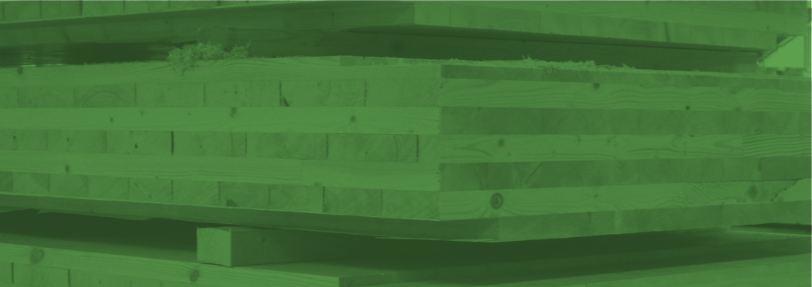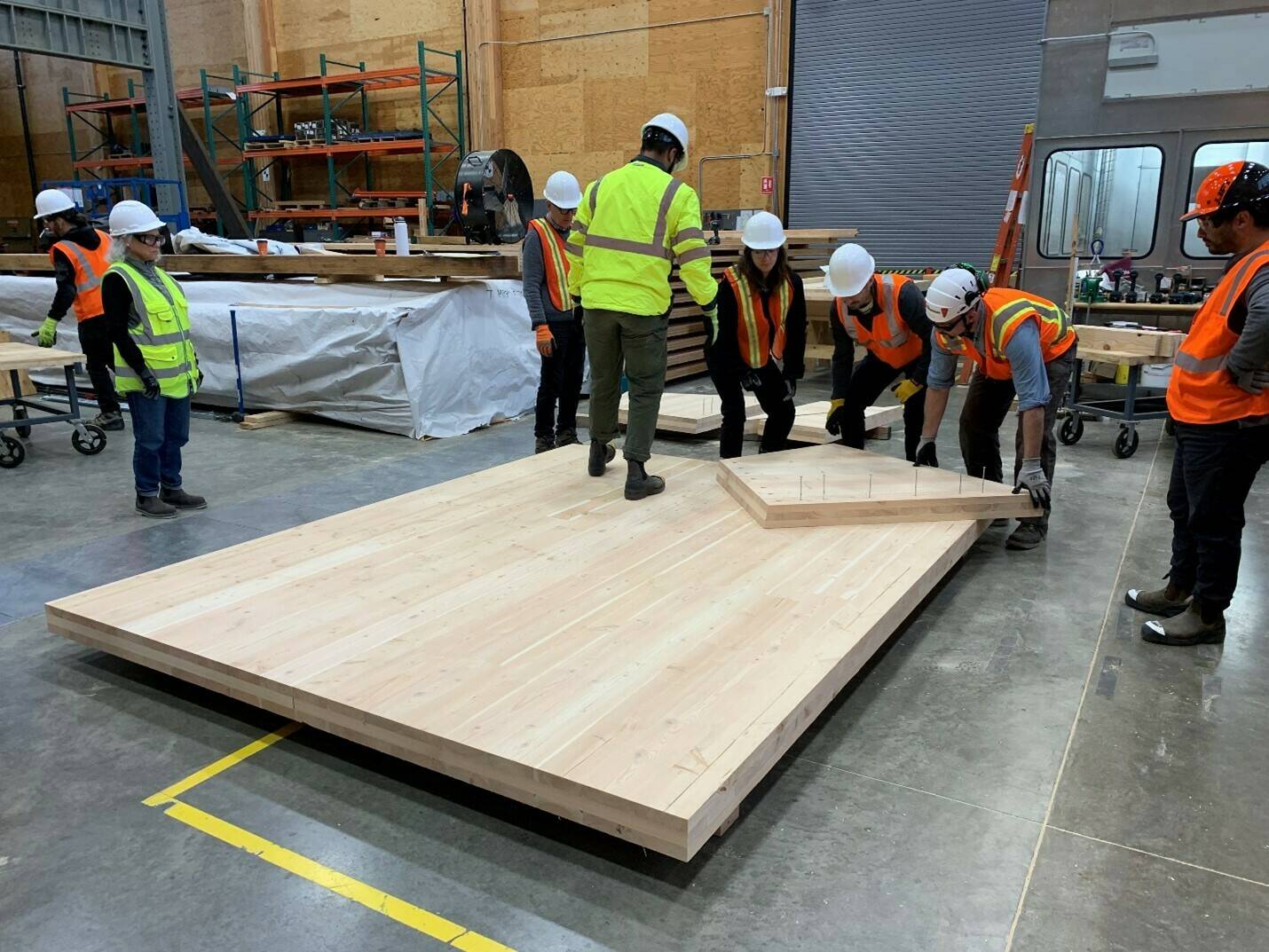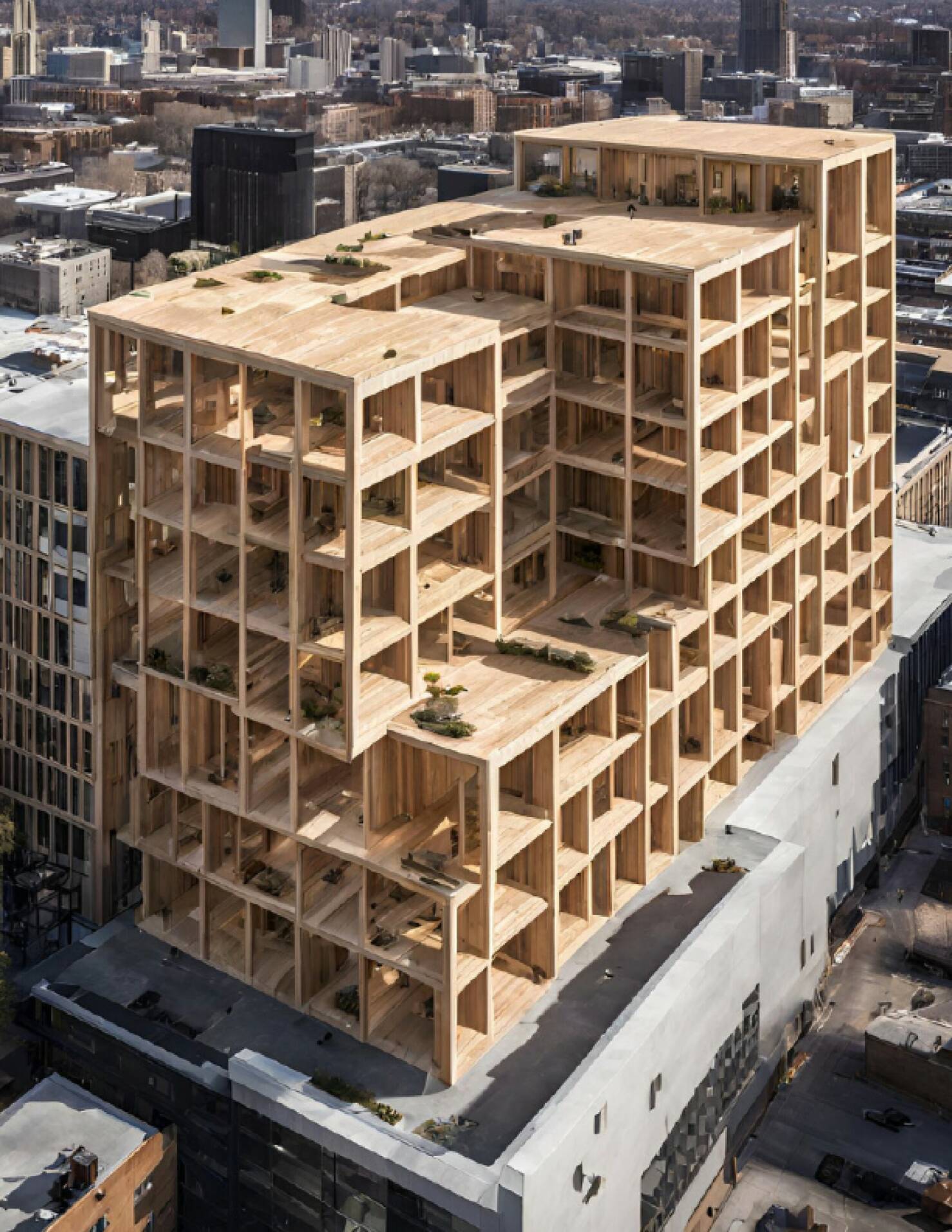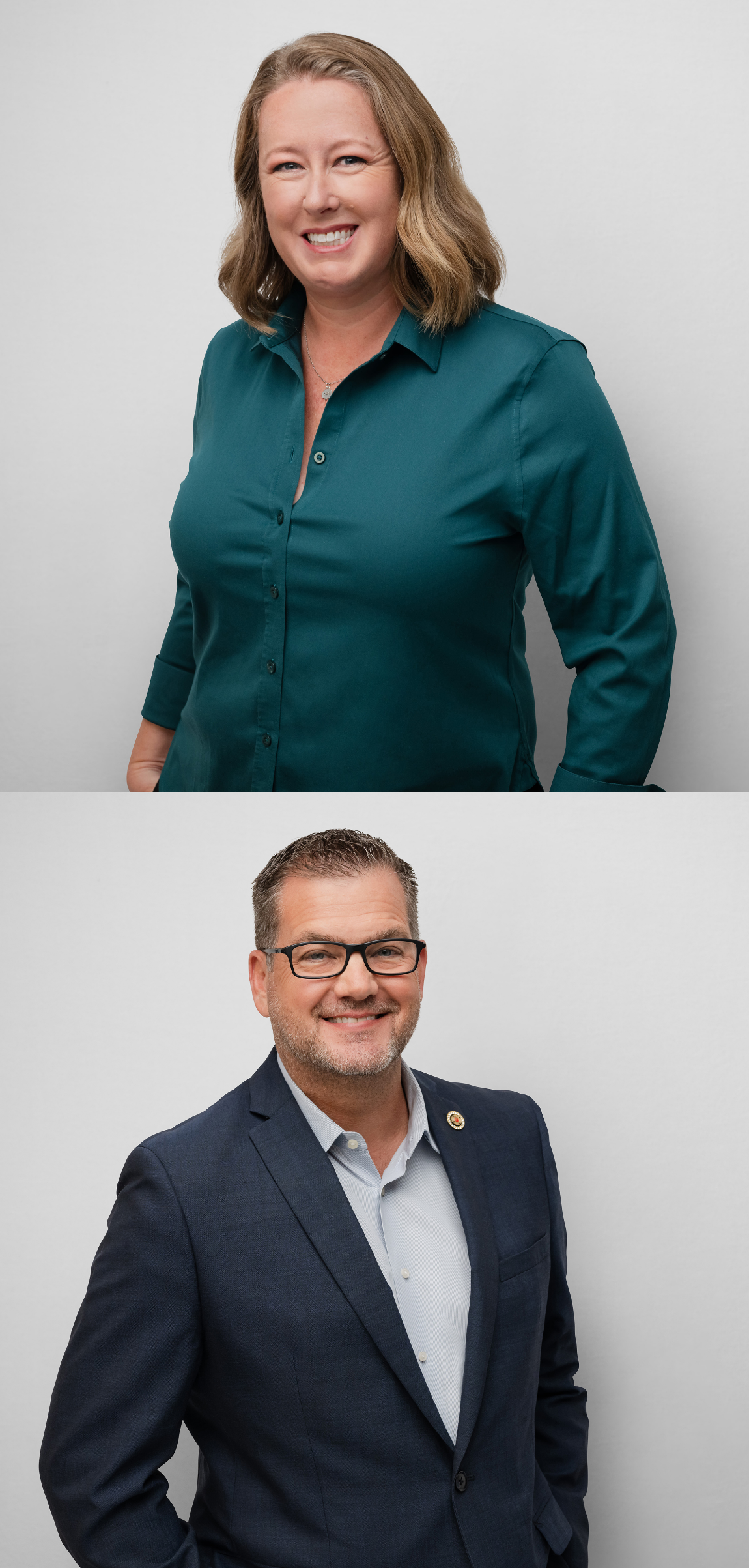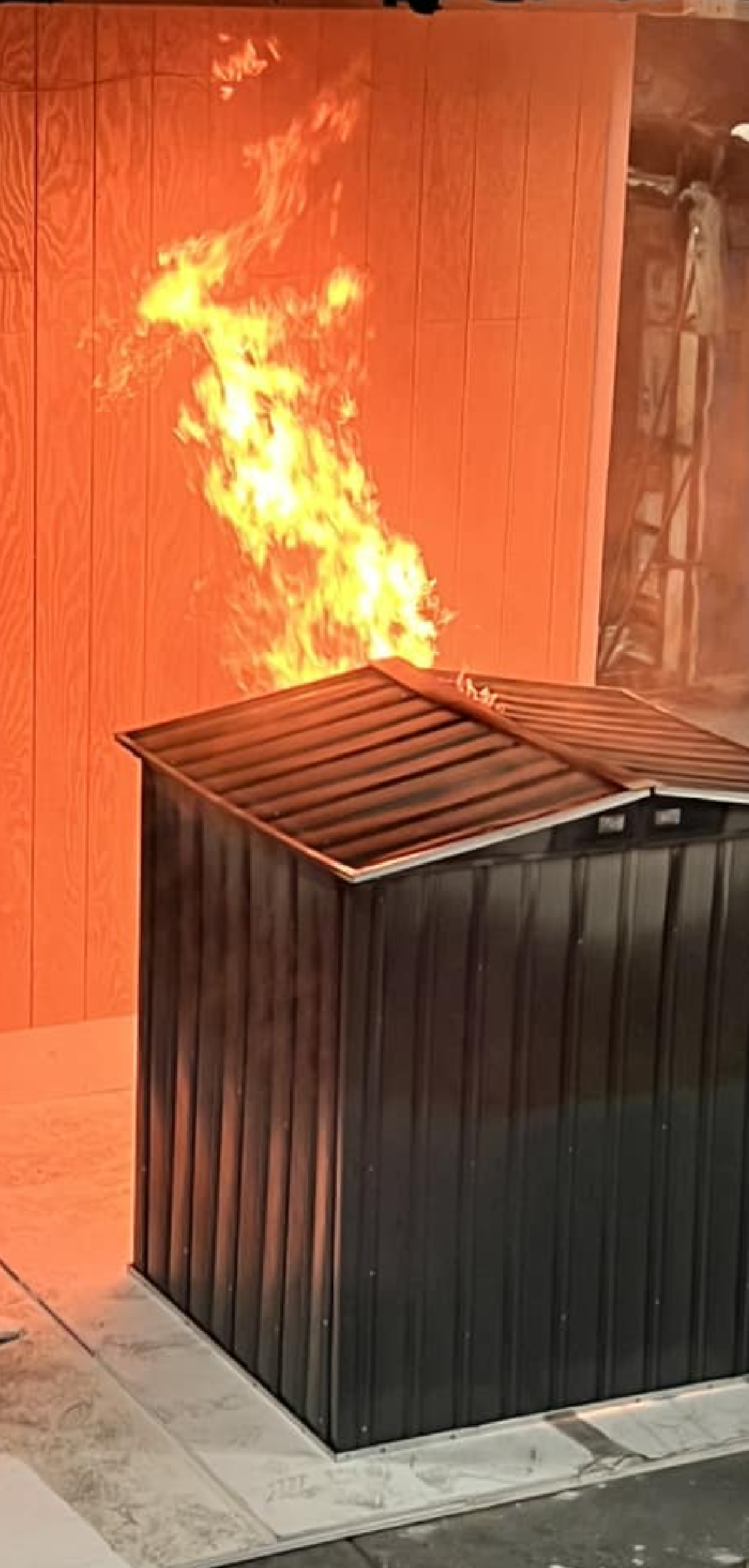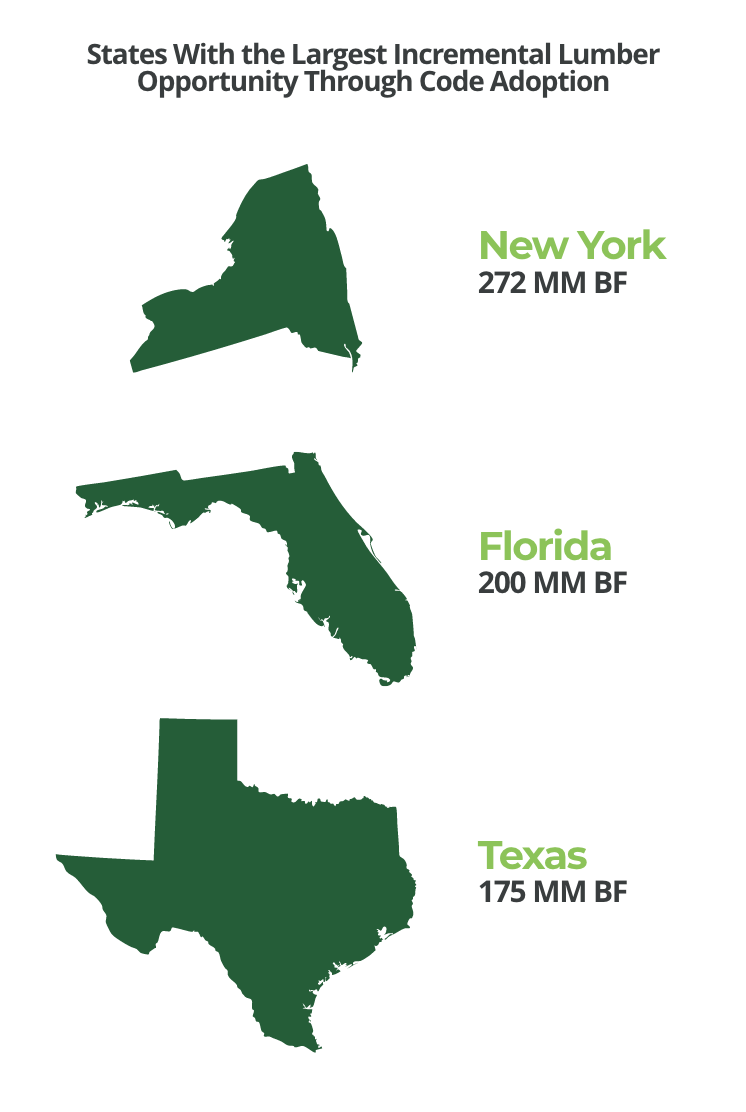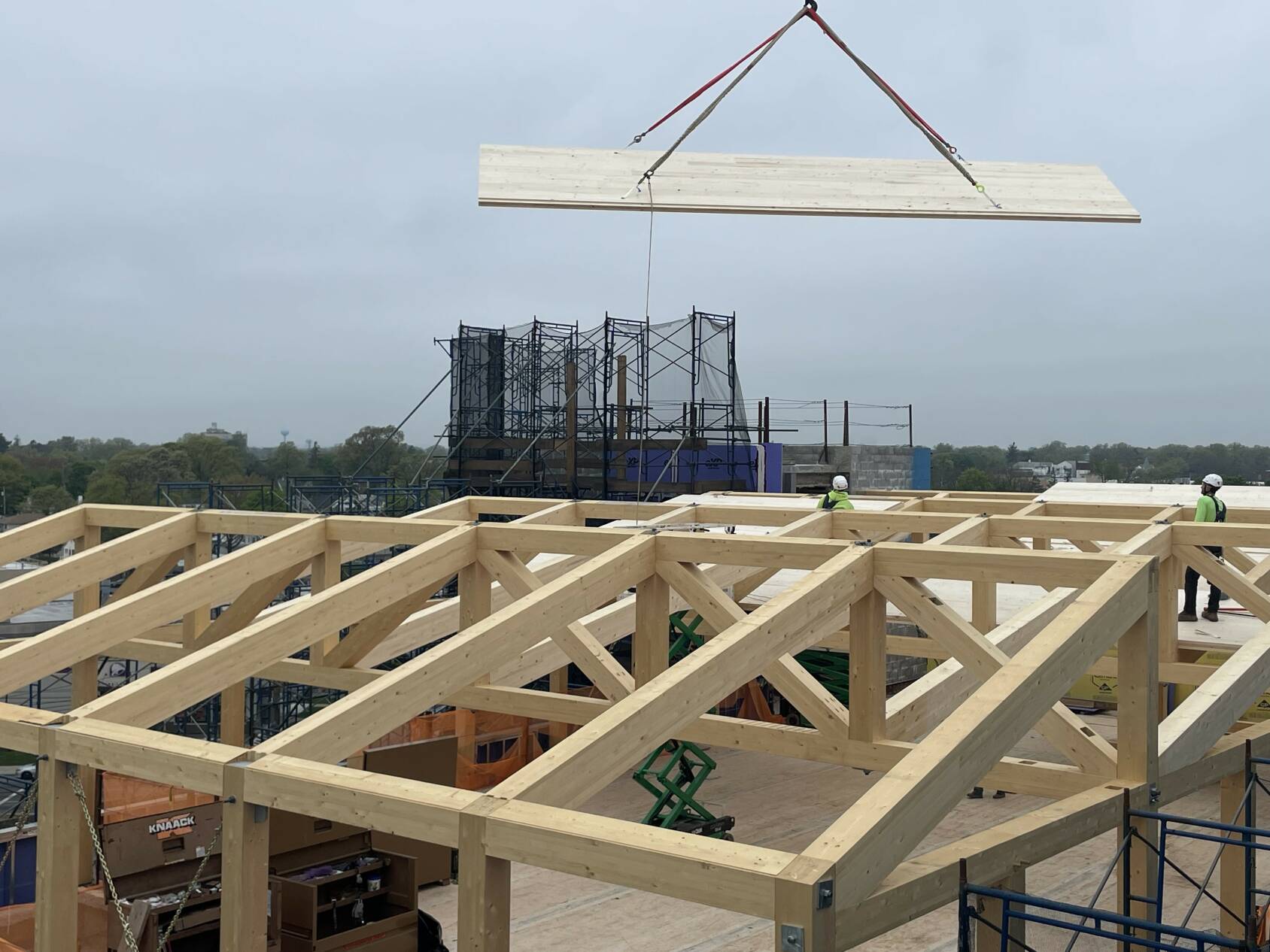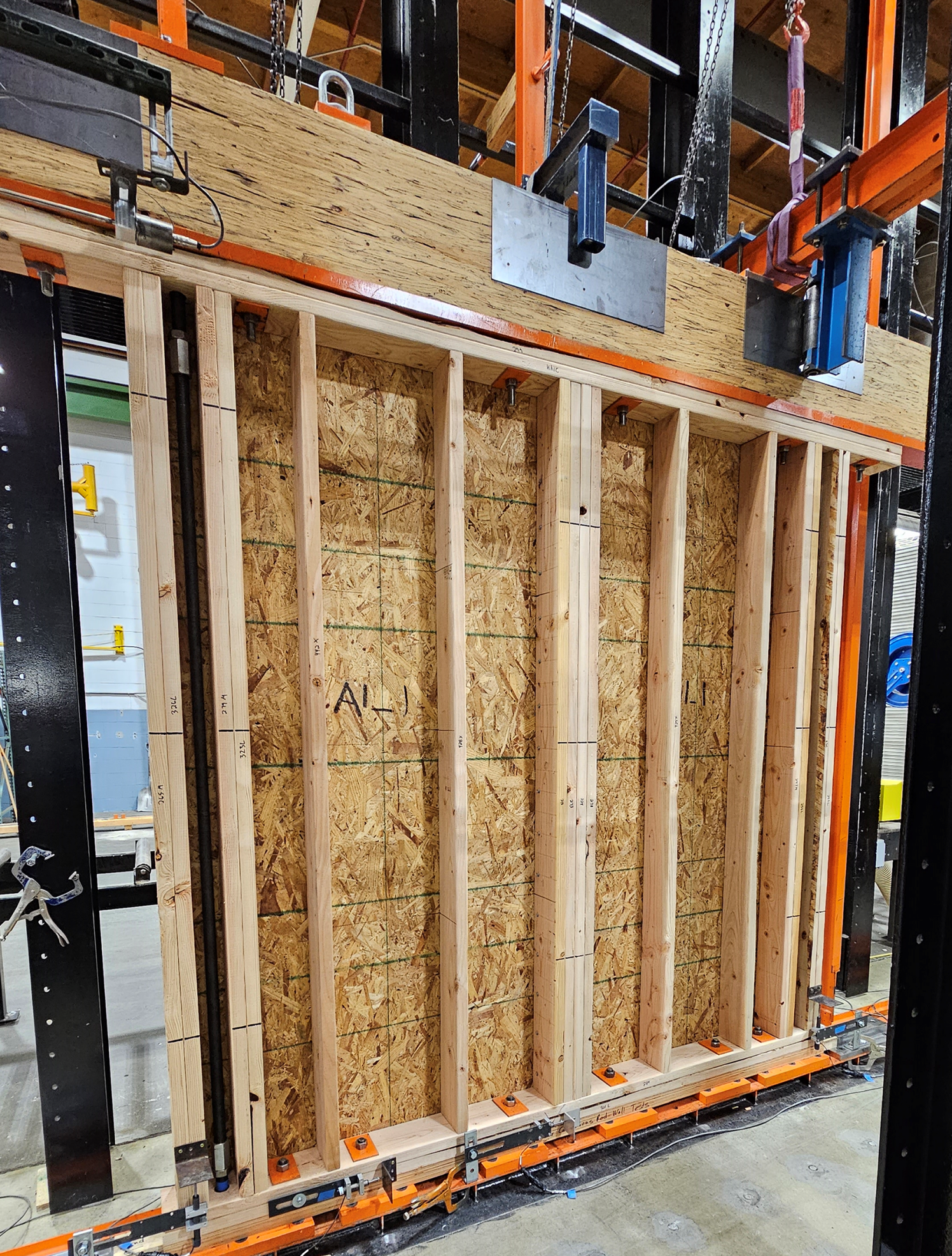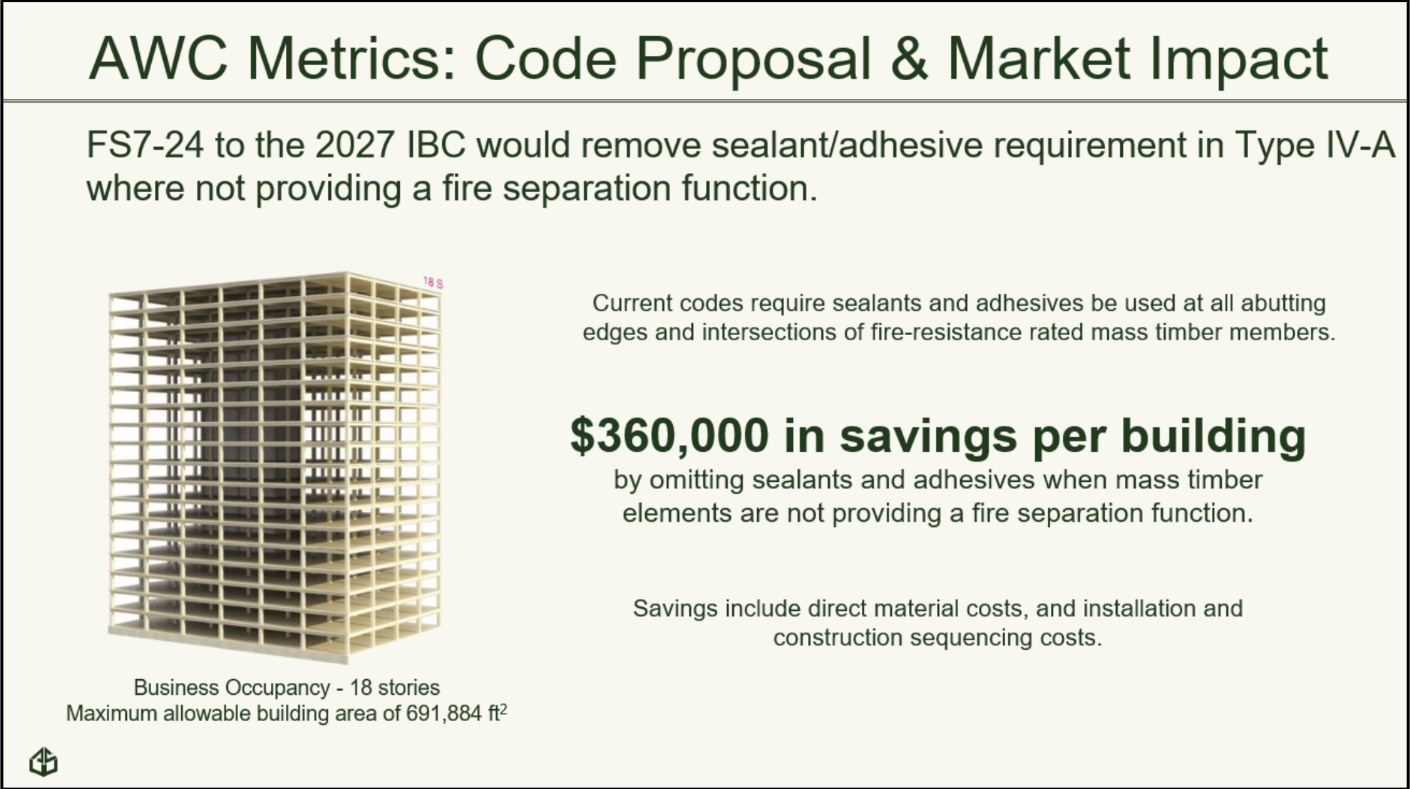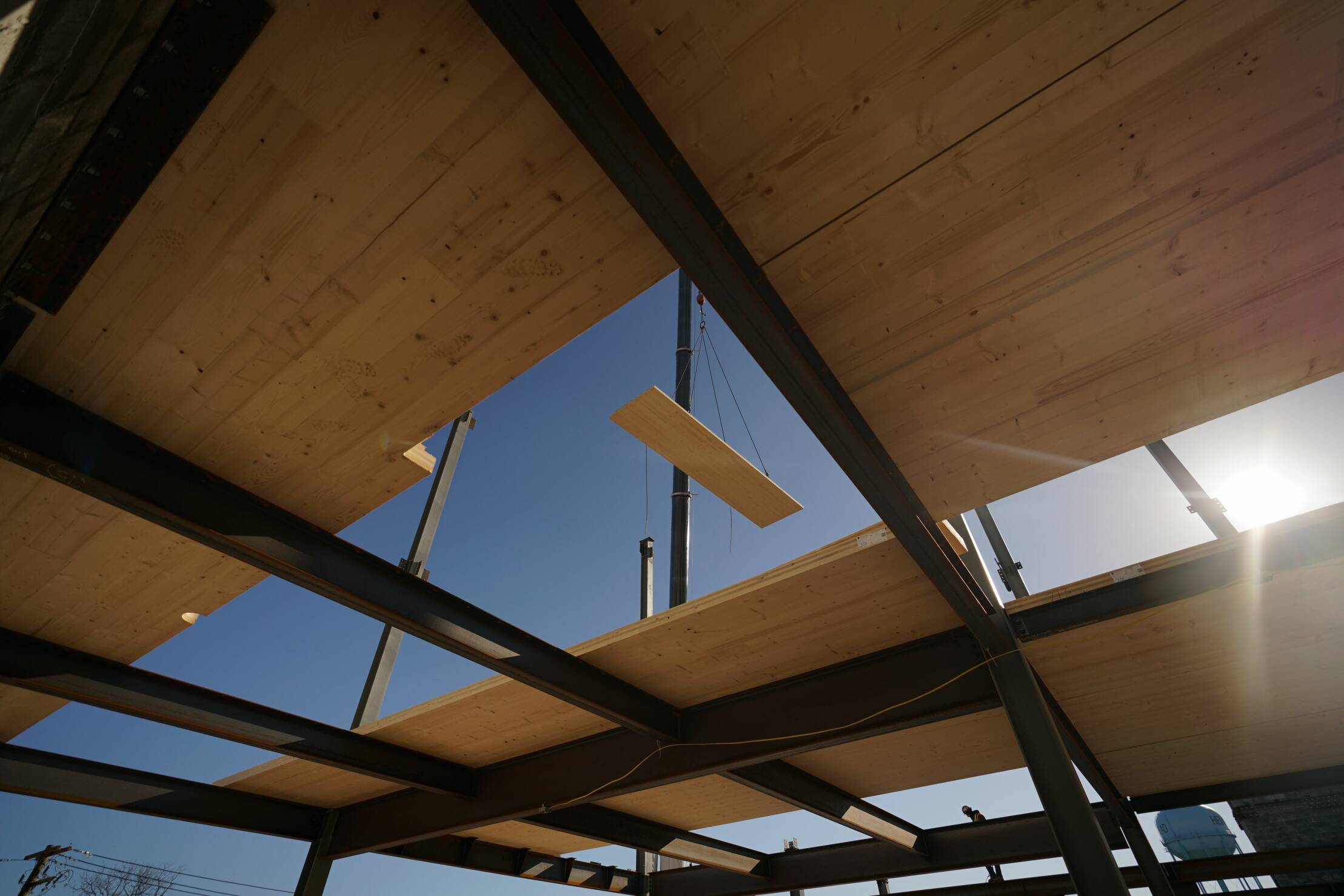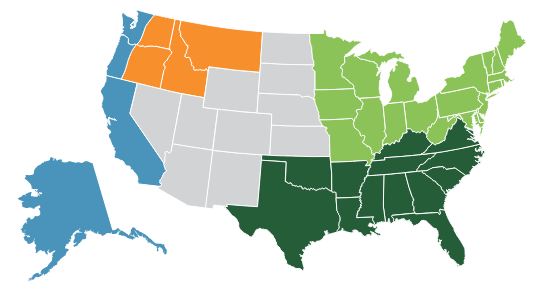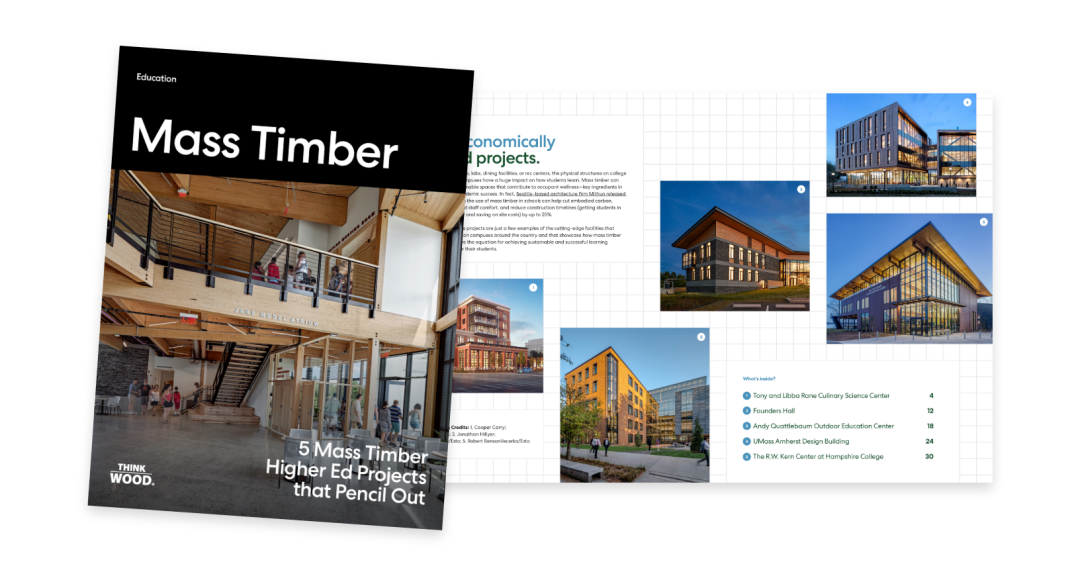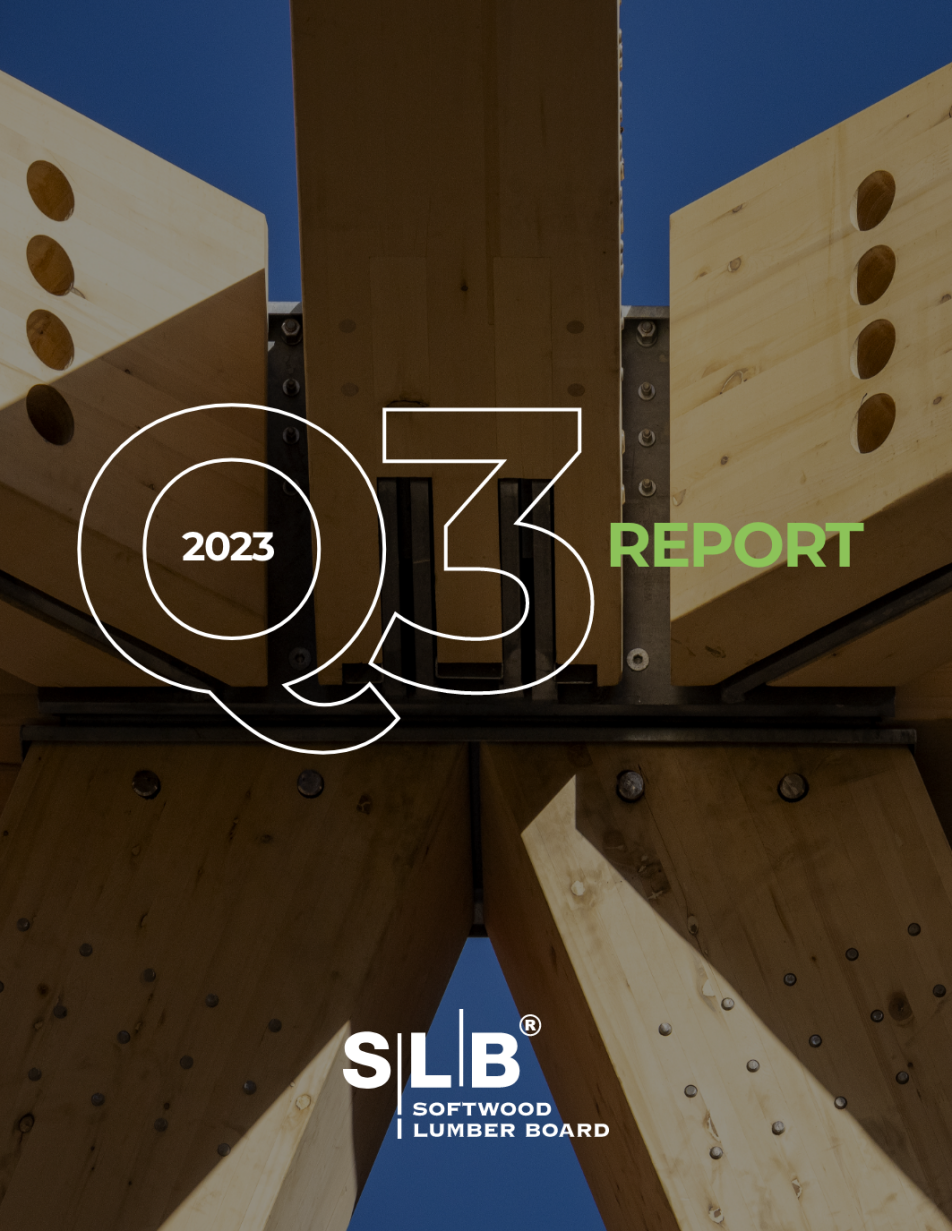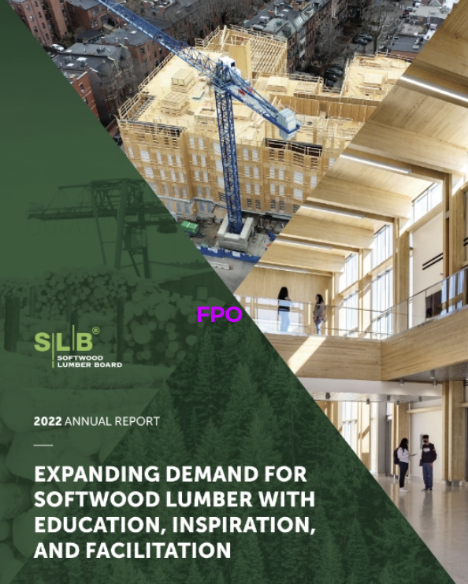
DOWNLOADS
THINK WOOD
HIGHLIGHTS
AWC
HIGHLIGHTS
EDUCATION
HIGHLIGHTS
WOODWORKS
HIGHLIGHTS
Q1 HIGHLIGHTS
SLB
Feature Story



Light-Frame
Mass Timber
Q1 HIGHLIGHTS
1,629
1.1 MILLION
OF CO2

Jump to these stories.
Want to read more SLB stories?
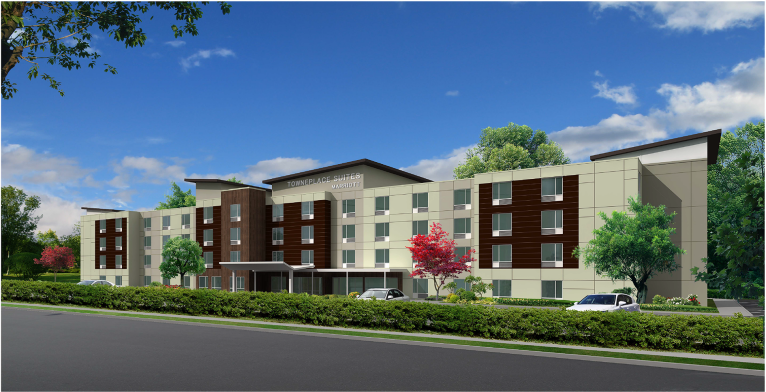
SLB Story 4:
Overcoming Code Challenges
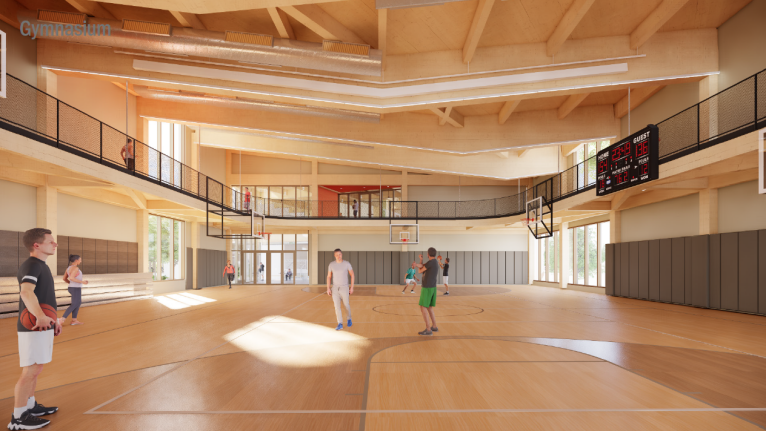
SLB Story 3:
Mass Timber Accelerators
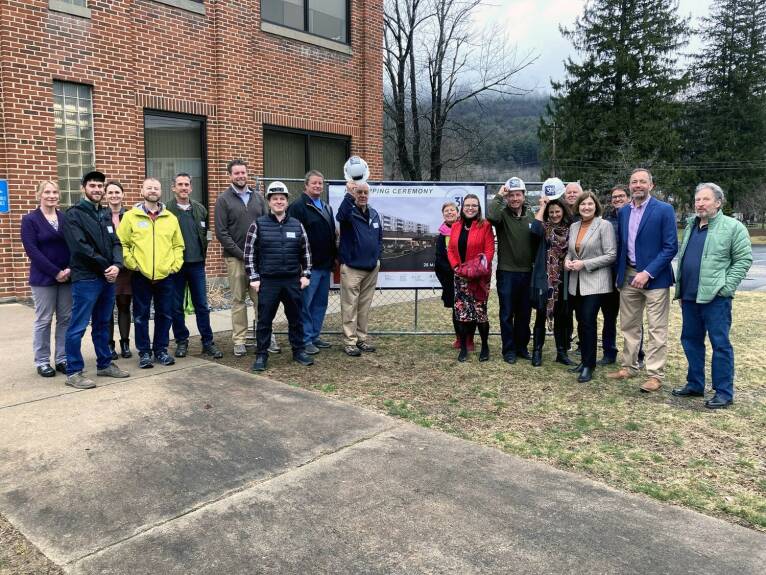
SLB Story 2:
MTC Winners Generate Insight
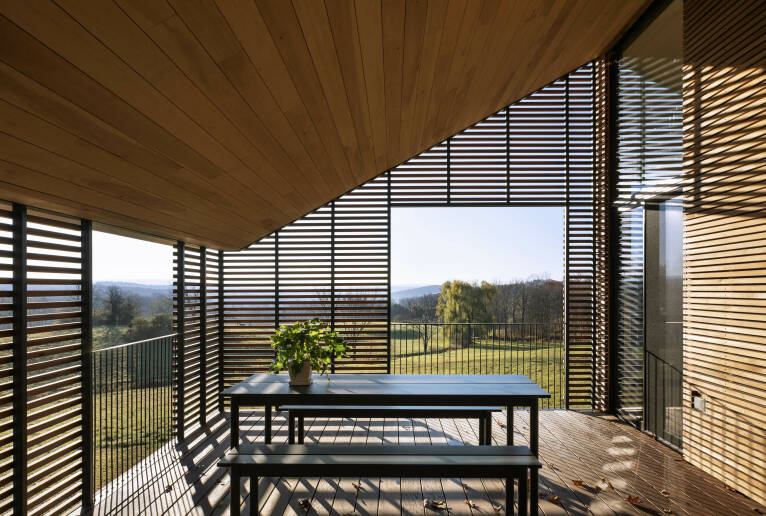
SLB Story 1:
Defending Market Share
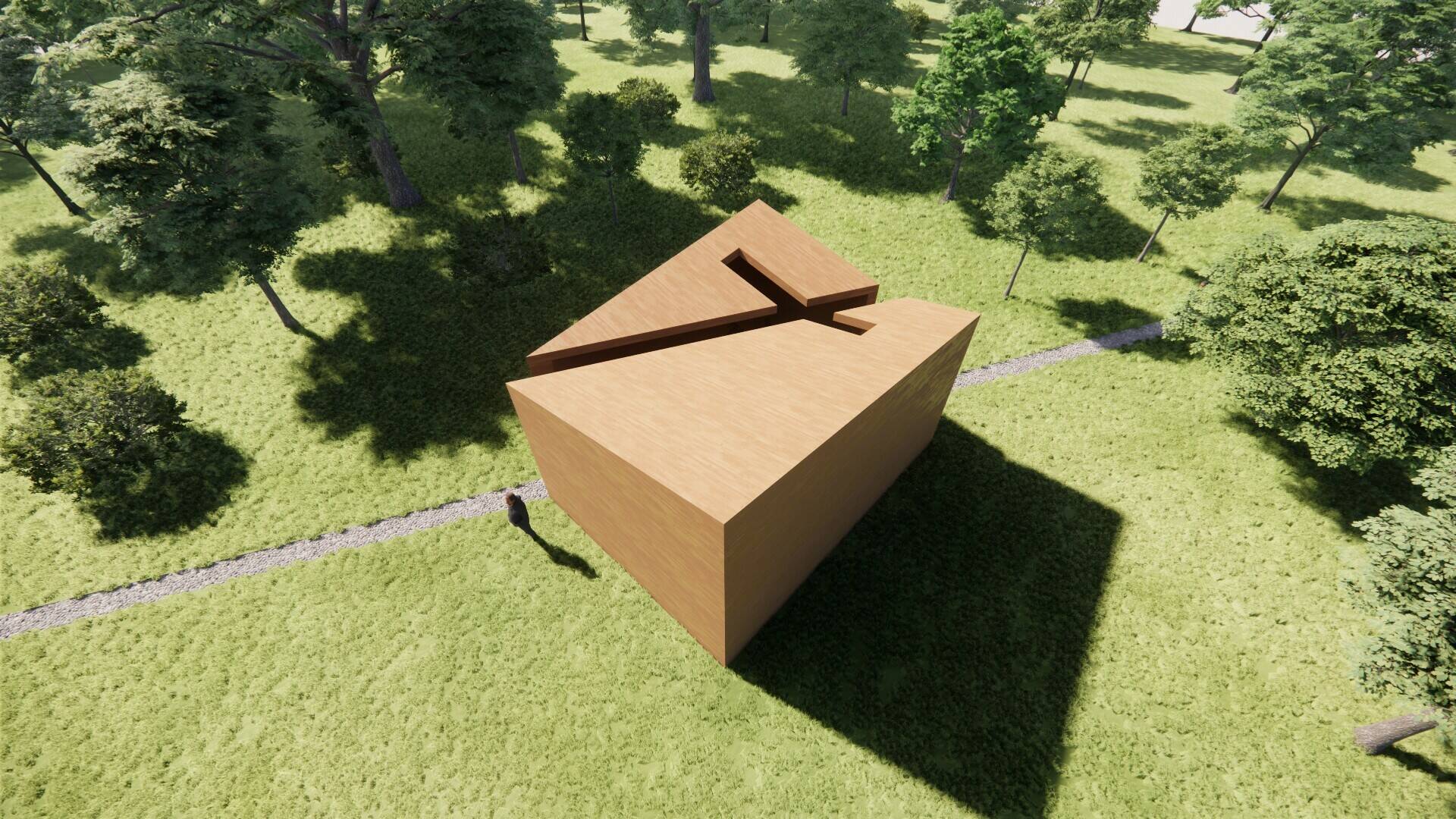
Michael Bennett | Studio Kër
"The need to protect biodiversity, the role of carbon in design, countering deforestation…all of these things are really the reason I’ve fallen in love with cross-laminated timber.
It offers versatility, flexibility, and beauty and allows for big installations while reducing energy consumption and being a viable alternative to traditional building materials."

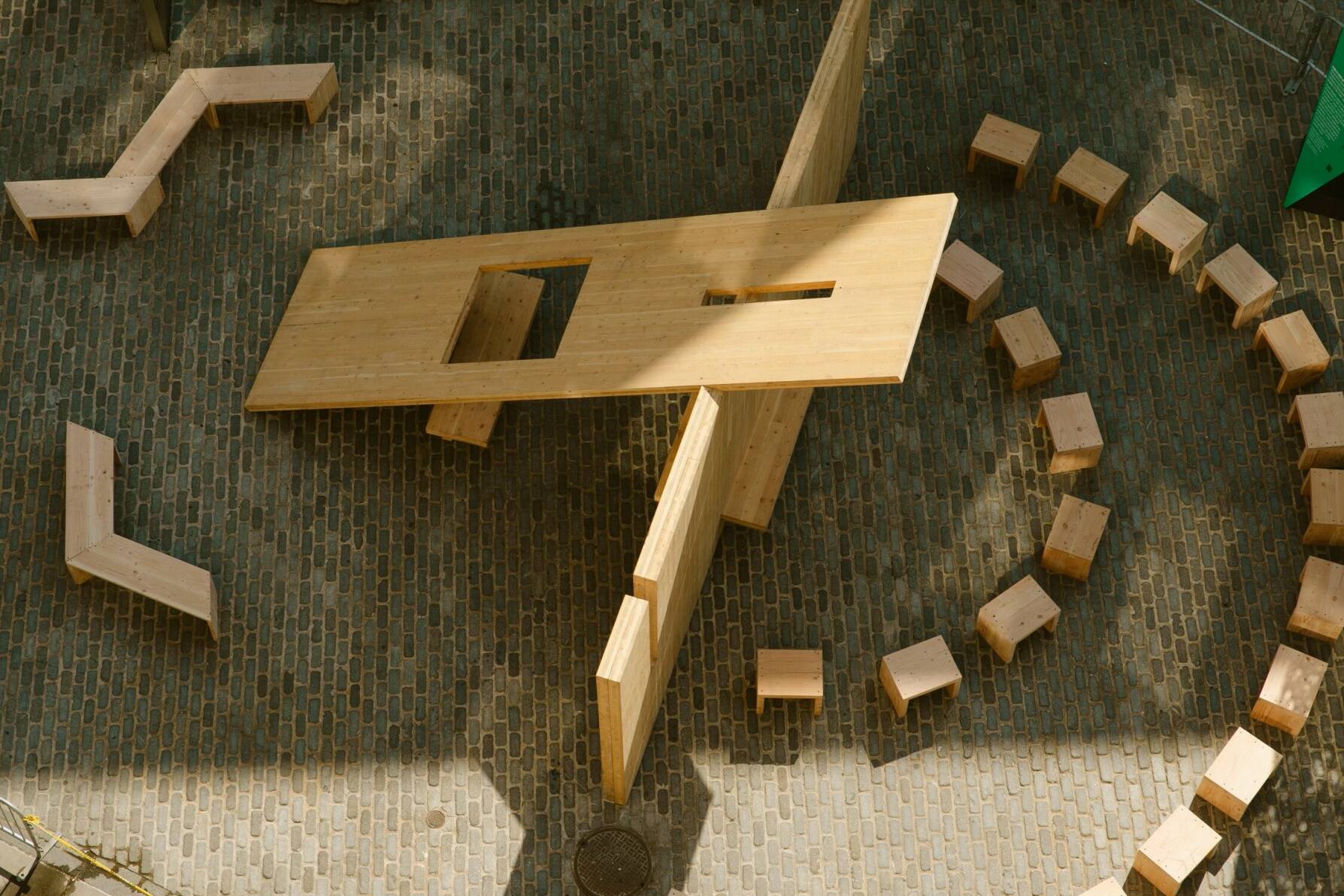
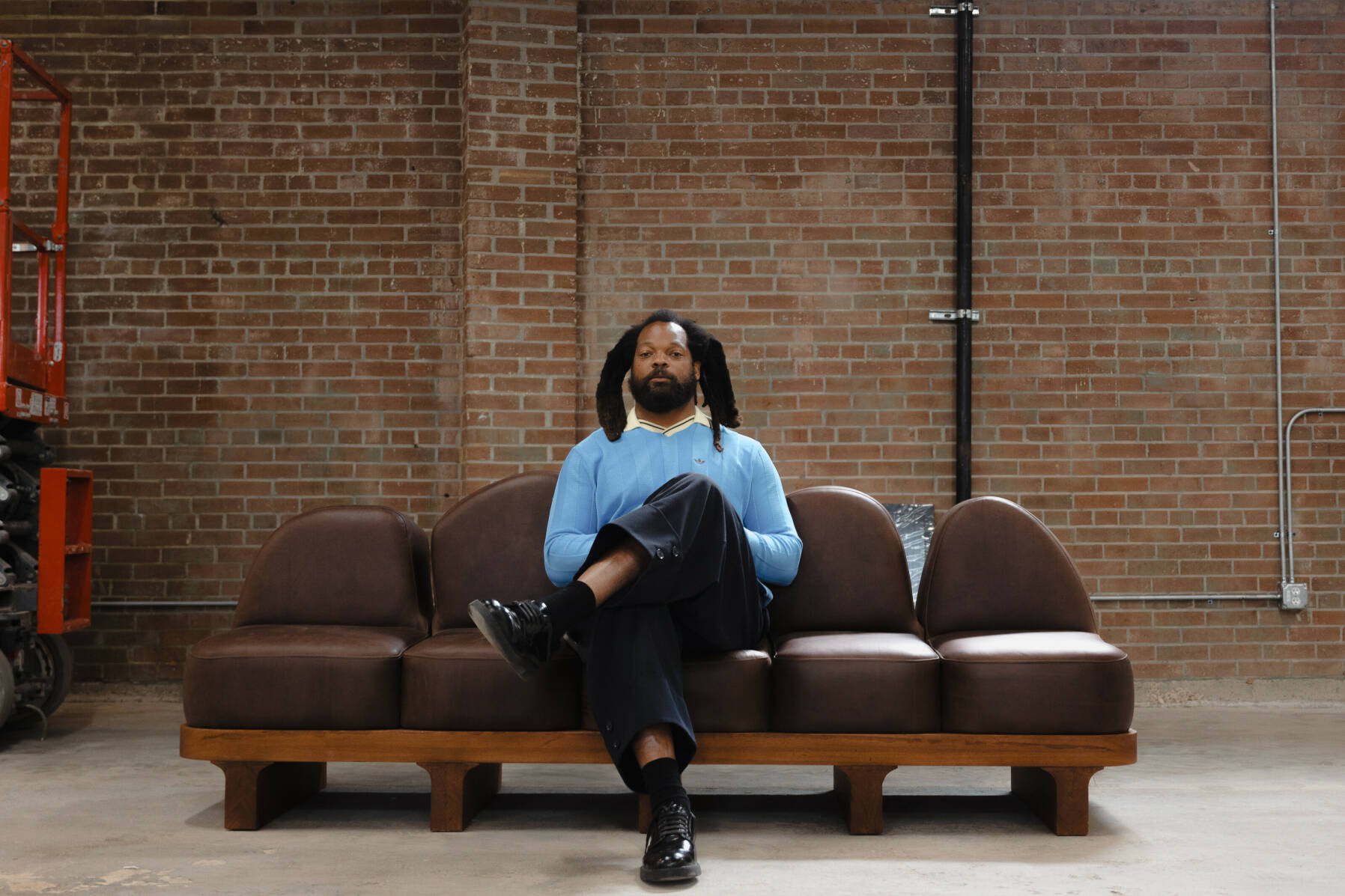
A year-long partnership with Super Bowl star-turned-designer Michael Bennett’s firm Studio Kër is showcasing innovative uses of lumber-based building systems.
The audience, made up of over 100 students and faculty, actively engaged with Bennett, asking questions and
offering positive feedback. The event and sponsorship demonstrate how high-profile speakers and partnerships can amplify the SLB’s message into mainstream forums.
Bennett’s talk kicked off a yearlong partnership between Studio Kër and the SLB. The collaboration also includes
work on a chapel and traveling exhibition featuring a CLT form used for education and dialogue related to preserving Black historical and sacred spaces.
SLB Education and Think Wood secured a speaking opportunity for former Super Bowl champion Michael Bennett, who spoke about his design firm’s use of wood at the Historically Black Colleges and Universities (HBCU) Spring Forum, hosted by the University of DC in March.
The former professional athlete and celebrity figure is a graduate of the Heritage School of Interior Design and is currently finishing an architecture degree at the University of Hawaii. In 2020, he founded Studio Kër, dedicated to creating spaces that “harmonize with the natural world and encourage meaningful interaction between humans,” and he is an influential presence on social media with 331,000 followers on his personal account.
During his presentation, Bennett shared insights into how his firm integrates lumber in its design projects, emphasizing lumber’s strength, flexibility, and ease of fabrication. He highlighted that using lumber also supports sustainable forest management practices and climate-conscious design.
Champion Wood Use to Underserved Communities
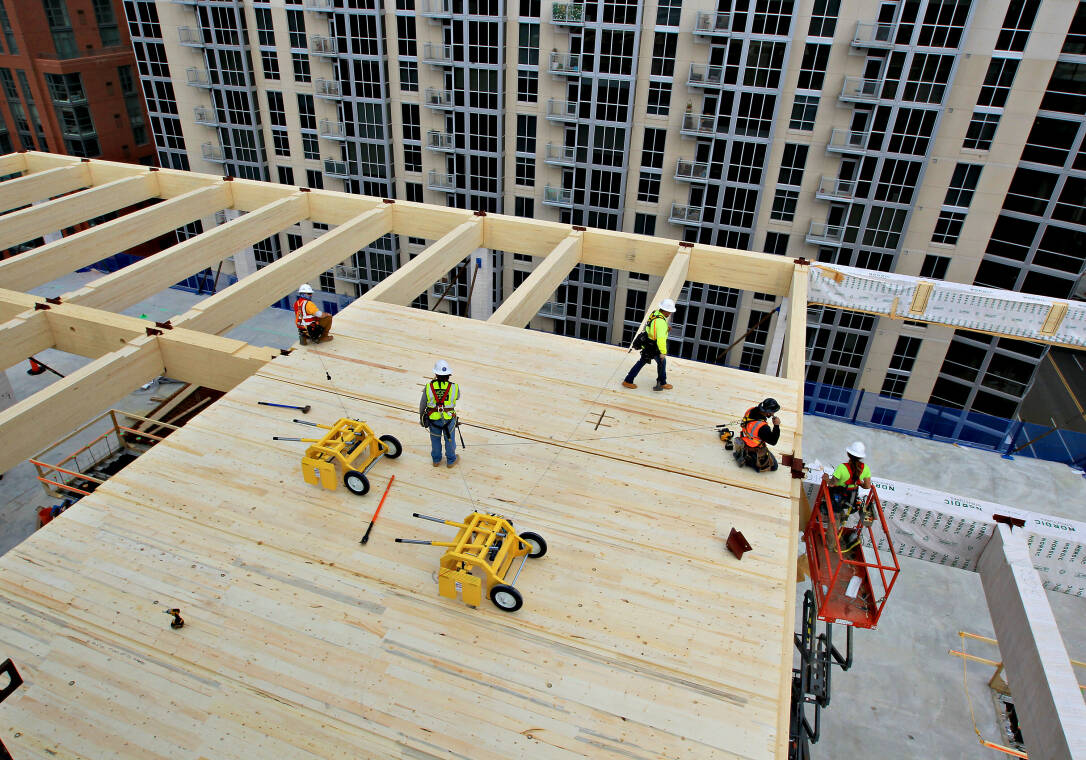

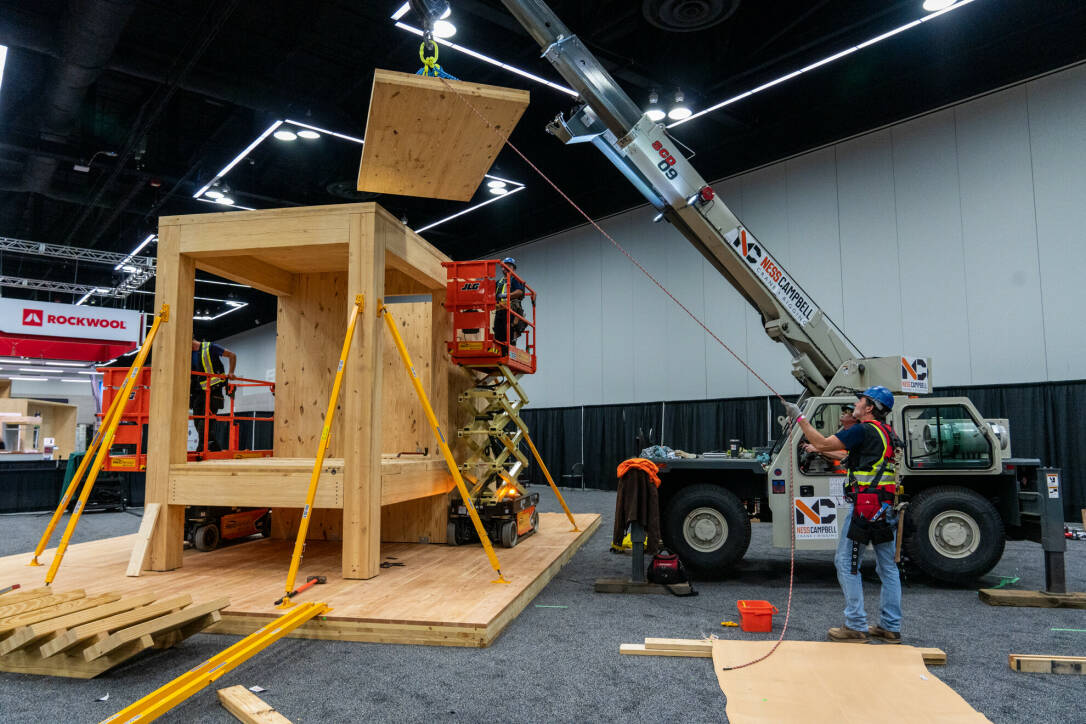

Boost Light-Frame
Lumber Construction
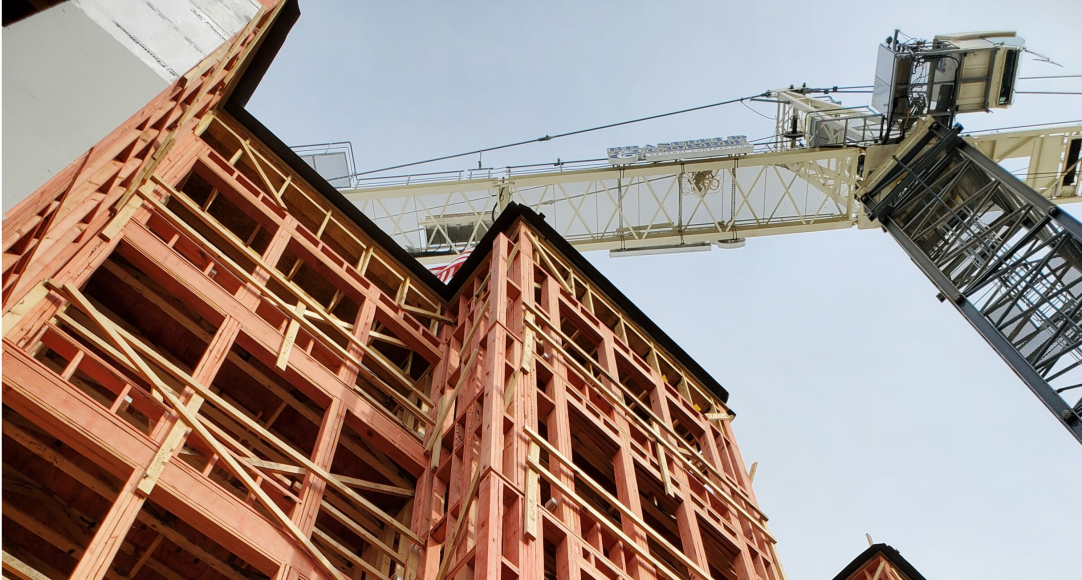

WOODWORKS HIGHLIGHTS
Structural Panels
ConstructioN

SLB Story 1:
Defending Market Share
SLB Story 2:
MTC Winners Generate Insight
SLB Story 3:
Mass Timber Accelerators
SLB Story 4:
Overcoming Code Challenges
SLB STORY 1
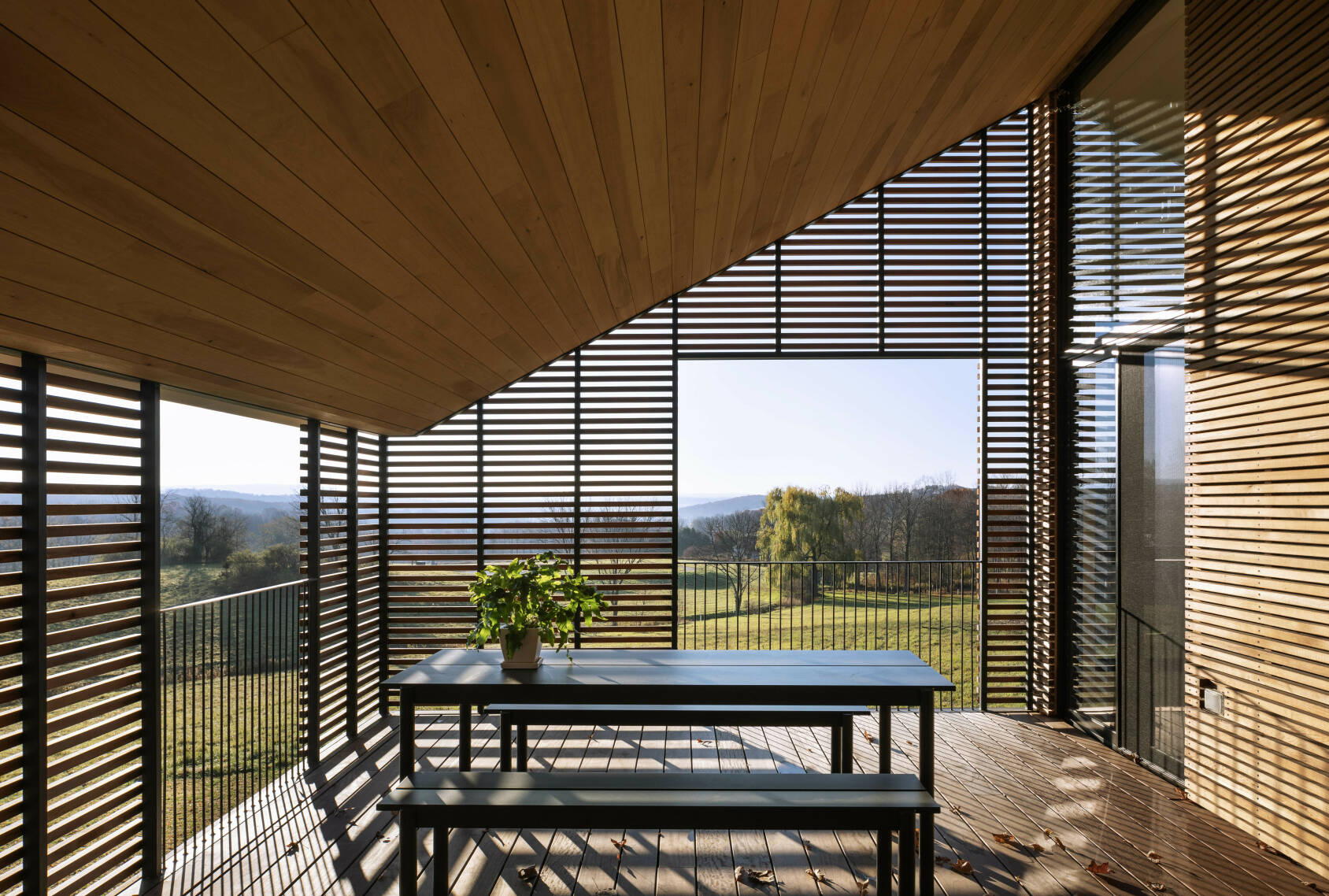
Alongside commercial project profiles, Think Wood continues to roll out residential case studies that showcase innovative uses of wood. Not only do these single-family home (SFH) stories highlight how critical a role wood plays in the home building industry, they also demonstrate innovative approaches to using wood beyond the framing of a home.
And they don’t just resonate with the residential audience: a profile of House Between Forest and Field by nArchitects—which features wood inside and out—was one of the most popular newsletter items in Q1 across all of Think Wood’s audiences. Other high-performing SFH content included Lake | Flato’s North Fork Residence showcasing the beauty and brawn of high-tech prefabricated wood systems.
To continue the momentum and meet this ongoing demand, Q2 will see the launch of a SFH LookBook—a downloadable resource featuring compelling photography and freshly curated content—with a focus on outdoor use and wood decking. This resource will nurture Think Wood’s residential audience to protect market share and also appeal to commercial AEC users who are inspired by single-family home design.
Think Wood engaged 5,500 builders and residential contractors with informative and inspiring residential stories in Q1.
Think Wood Defends Market Share with Residential Wood Content
EDUCATION HIGHLIGHTS



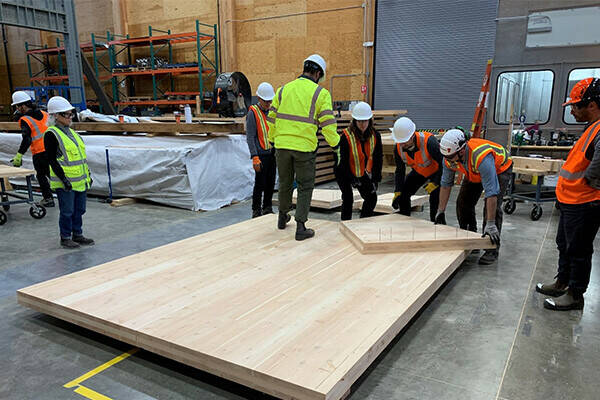

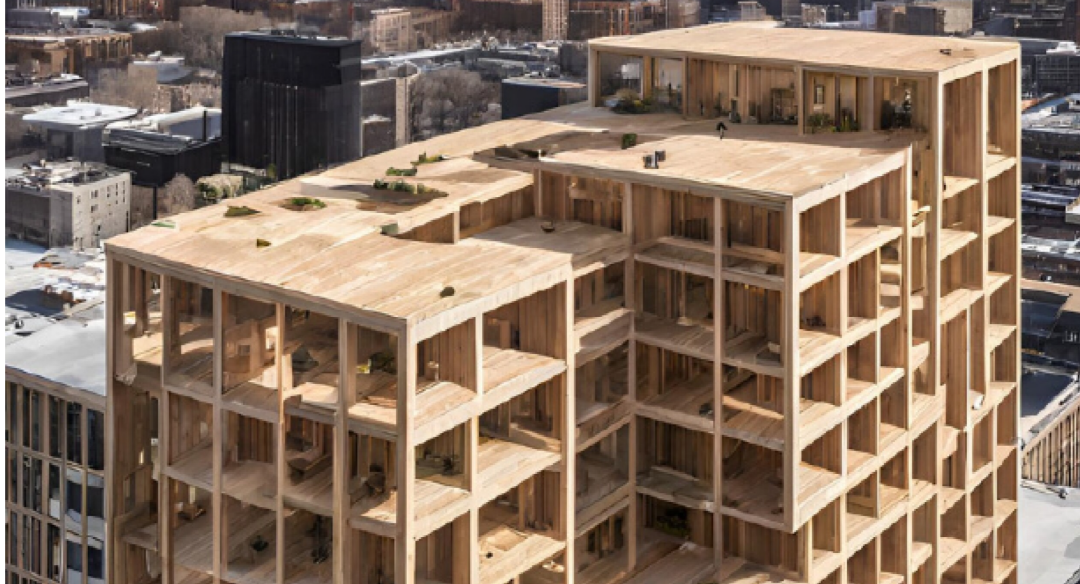

WOOD INSTITUTE
Completed
WOOD INSTITUTE

SLB Story 1:
Defending Market Share
SLB Story 2:
MTC Winners Generate Insight
SLB Story 3:
Mass Timber Accelerators
SLB Story 4:
Overcoming Code Challenges
SLB STORY 2


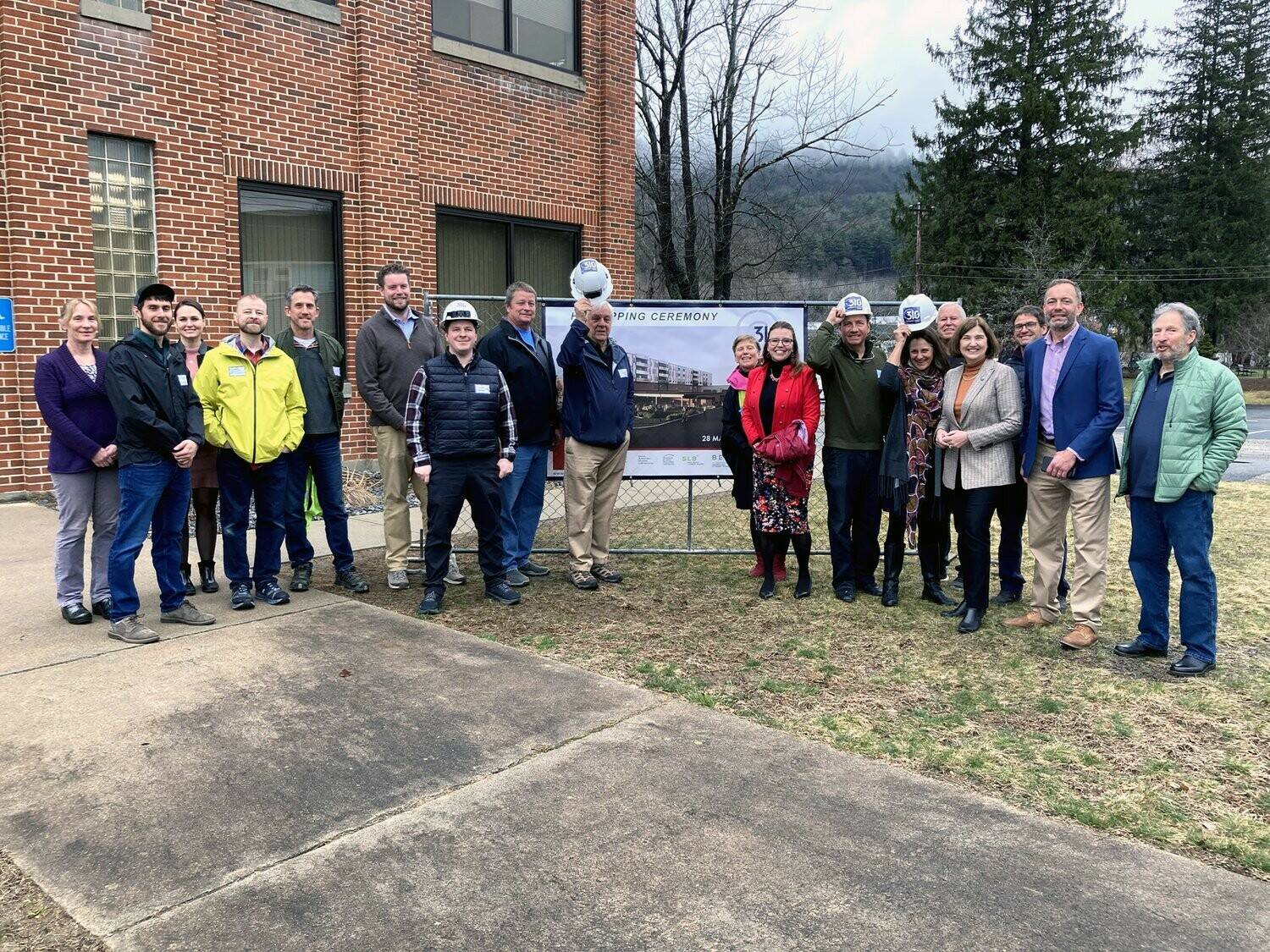
With funding from the SLB and USDA Forest Service, the 2023 Mass Timber Competition-winning project team for UP@310 Lofts is spreading the word about the potential for mass timber overbuilds in a variety of ways. Constructed as a mass timber overbuild above an existing two-story commercial building, the net-zero, 57-unit multifamily project is built using glulam posts and beams with CLT floor slabs. The architect for the project, Randall Walter, Principal at Lignin Group, recently presented learnings from the project in an SLB-sponsored webinar about mass timber overbuilds—reaching over 1,300 AEC professionals.
“Unappreciated buildings don’t need to be forgotten forever,” Walter said. “Sometimes they just need a little vision and a nudge in the right direction to come alive again. A mass timber overbuild is a great way to do that.”
Walter also presented a session in the WoodWorks Learning Lounge at the AIA Conference on Architecture in June. These initiatives show how the SLB’s individual investment in the Mass Timber Competition winners can bring additional collaborations and mutual benefits that raise visibility and provide peer-to-peer validation of the benefits of wood construction.
Another Mass Timber Competition-winning project supporting market expansion is Evergreen Charter School. The 85,000-square-foot, five-story hybrid CLT education facility with biophilic design elements broke ground in Q2 and is planned for completion in 2024.
"The cost difference between a traditional steel structure and our hybrid CLT structure is negligible, even before considering schedule savings,” Martin Hopp, Principal Architect for the facility, told the SLB. “A crew of steel workers and carpenters, with no prior mass timber experience, successfully erected it. After seeing how successful it was, they were enthusiastic about working with this approach in the future.”
The project’s success is demonstrating the benefits of wood construction in schools and will help continue to drive mass timber’s 80% average annual growth rate in education buildings.
Winning projects from both the 2022 and 2023 Mass Timber Competitions are advancing, generating insights to solve long-term challenges for mass timber adoption and expansion.
Mass Timber Competition Winners Generate Insights and Enthusiasm

Hours Logged

Across All Events
AWC HIGHLIGHTS
SLB Story 1:
Defending Market Share
SLB Story 2:
MTC Winners Generate Insight
SLB Story 3:
Mass Timber Accelerators
SLB Story 4:
Overcoming Code Challenges
SLB STORY 3
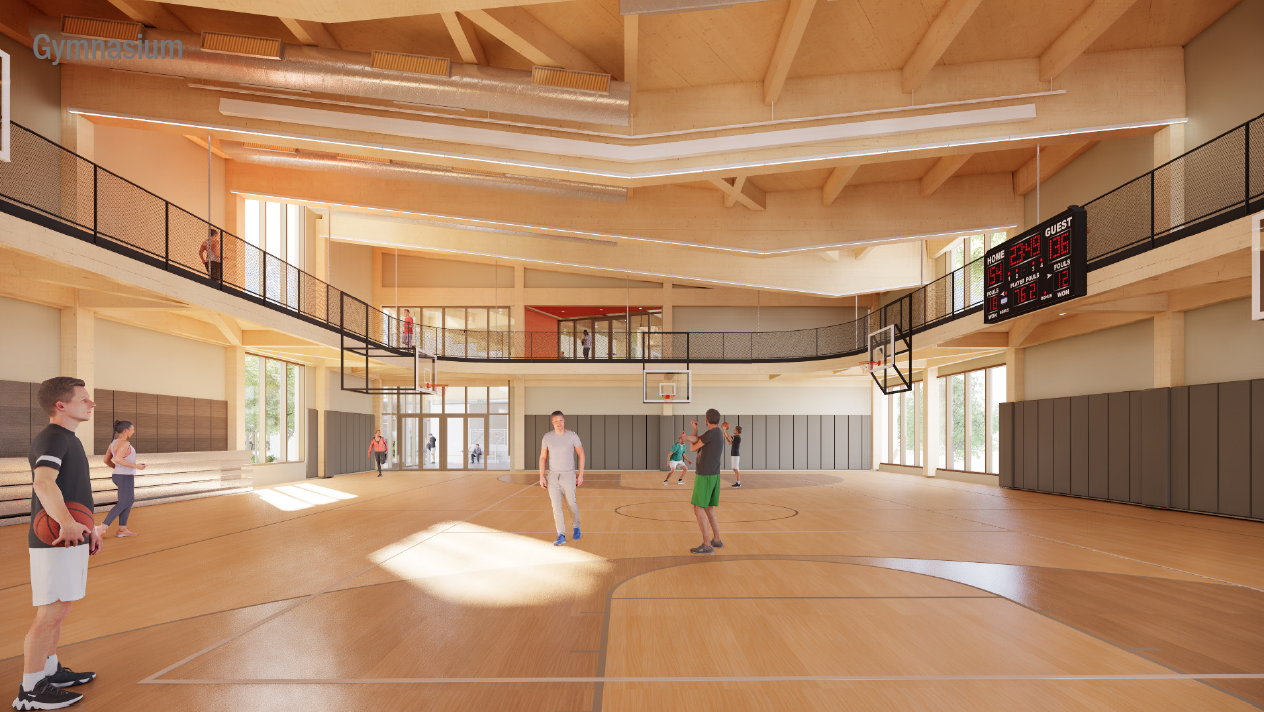
Working with jurisdictions, industry, and local governments, SLB-supported mass timber accelerator initiatives are expanding opportunities for mass timber projects, removing barriers, and streamlining code compliance in Boston, New York, and Atlanta.
The accelerators utilize matching funds from the USDA Forest Service’s Wood Innovations Grants and other programs, amplifying the SLB’s $50,000 investment to support a total project budget of $500,000.
This past fall, New York City launched its first-ever Mass Timber Studio, a technical assistance program designed to support active mass timber development projects in the early phases of project planning and design.
“Expanding the use of mass timber is a critical component to achieving New York City’s carbon reduction targets, including reducing embodied carbon emissions for new buildings, infrastructure, and major retrofits by 50 percent,” writes the American Institute of Architects New York Chapter as part of an event presenting seven projects that have been awarded in the first phase of the new mass timber accelerator program. The winning projects include four multifamily buildings, a mixed-use industrial space, a public library branch, and a recreation center.
The Atlanta Mass Timber Accelerator Program from the Georgia Forestry Foundation (GFF), in partnership with the City of Atlanta, is accepting applications through July 2. Meanwhile, the Boston Mass Timber Accelerator, launched in 2021, issued a final report finding that mass timber is accelerating in the city and region, with eight active projects totaling over 1.3 million sq. ft. projected to be constructed with mass timber materials. “Notably, two of the active projects with mass timber commitments are the initial buildings of much larger multi-building projects that will be built out over the next ten years,” the report says. “Boston’s future projects with mass timber commitments amount to 22 buildings totaling over 4.3 million sq. ft. of construction.
Mass timber accelerators in key urban regions remove market barriers and ensure maximum funding impact.
SLB-USDA Mass Timber Accelerators Help Drive Market Growth

Leads (SQLs)
8.4 MM BF
OF LUMBER
Projects

THINK WOOD HIGHLIGHTS
SLB Story 1:
Defending Market Share
SLB Story 2:
MTC Winners Generate Insight
SLB Story 3:
Mass Timber Accelerators
SLB Story 4:
Overcoming Code Challenges
SLB STORY 4
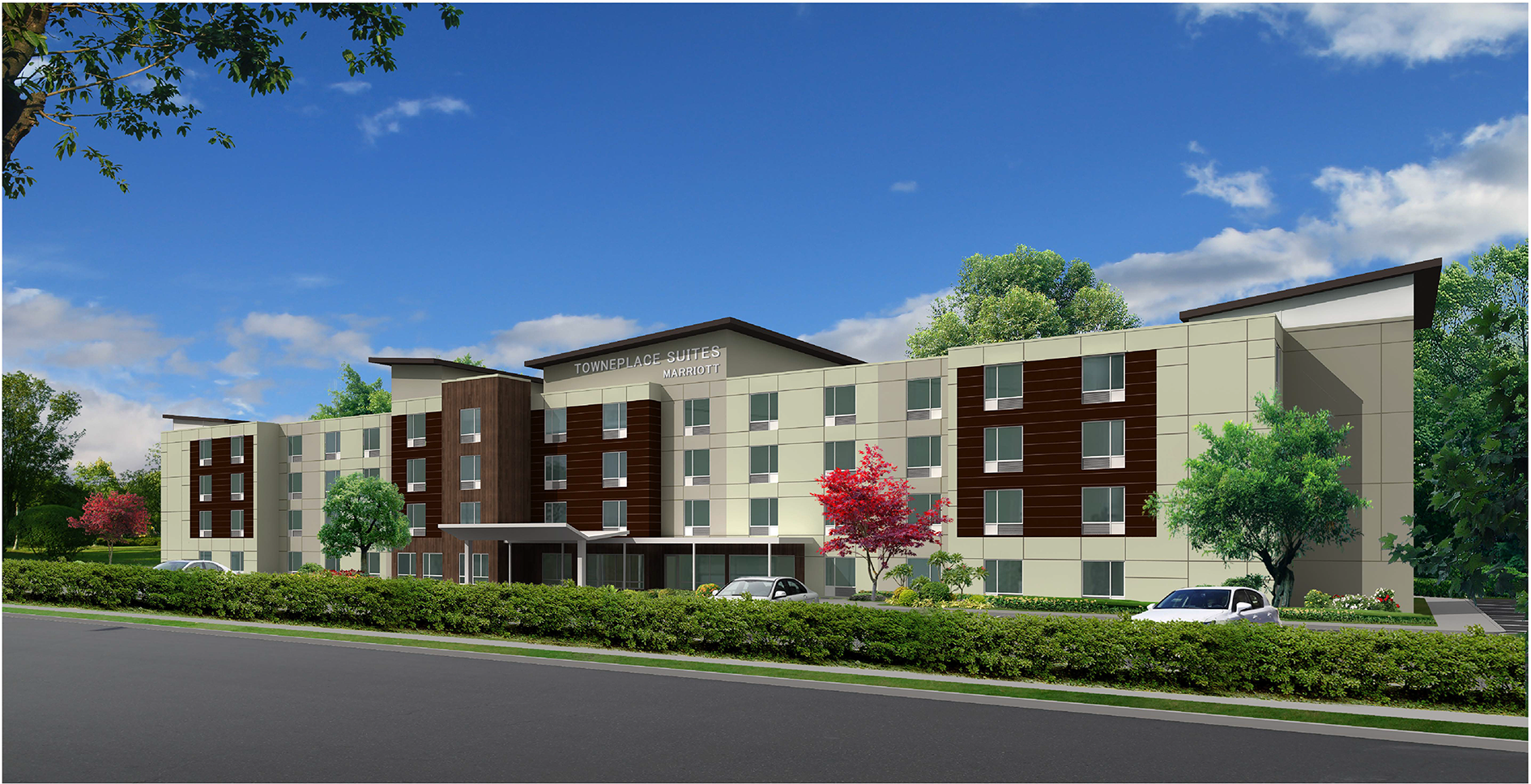
The owner and project manager of Groove Construction contacted WoodWorks when an approval issue caused delays in the firm’s construction of a four-story, light-frame Marriott TownePlace Suites hotel. The city plan reviewer believed that the building code limited their construction type (Type V-A) to a maximum of three stories, despite a letter supporting the plan from the project’s structural engineer.
A WoodWorks Regional Director and a representative from the AWC met with Groove together to discuss options for the project. The two SLB programs agreed with the project team’s code interpretation and suggested clarifications to share with the city. The reviewer was receptive to the comments, and ultimately approved the 67,000-square-foot hotel, which will use 13.2 BF/SF.
Project teams supported by WoodWorks generally go on to build many additional projects with wood, a fact that was particularly true in this instance: Groove Construction had three other light-frame wood projects on hold because of the code issue, all of which were able to move forward thanks to the cooperative efforts of WoodWorks and the AWC.
WoodWorks and the AWC Help Overcome Code Challenges for Light-Frame Hotels
If you'd like a printed version of the Q1 Report mailed to you,
please email info@softwoodlumberboard.org.
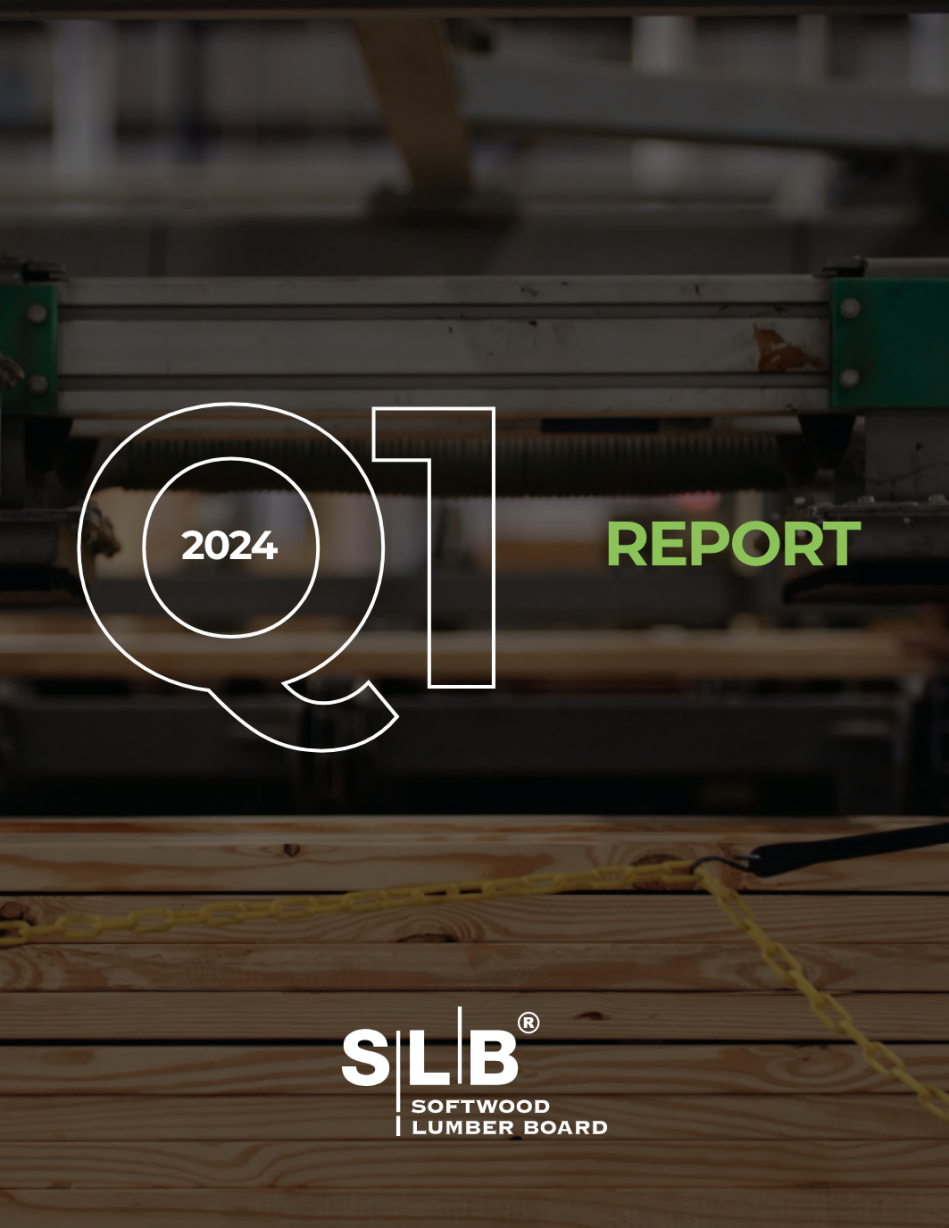

of the Impact of the SLB
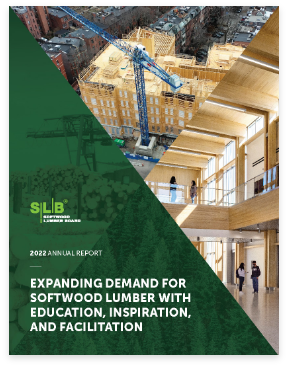
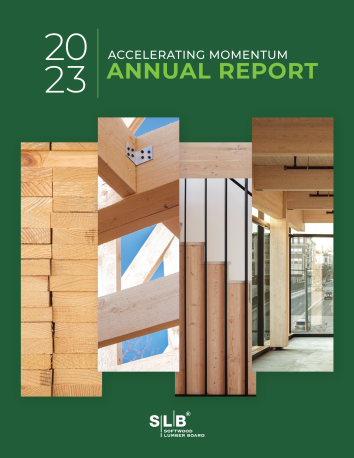






Light-Frame
Mass Timber
Q1 HIGHLIGHTS
facilitating wood use
1.1 MILLION
431
GOAL
1,629
2024 GOAL


SLB Story 4:
Overcoming Code Challenges
SLB Story 3:
Mass Timber Accelerators
SLB Story 2:
MTC Winners Generate Insight
SLB Story 1:
Defending Market Share
Want to read more SLB stories?
Jump to these stories.
As part of the SLB’s partnership with Studio Kër, a CLT form created to build a chapel will be used in a traveling exhibition. Rendering Credit: Courtesy of Studio Kër
As part of the SLB’s partnership with Studio Kër, a CLT form created to build a chapel will be used in a traveling exhibition. Photo Credit: Courtesy of Studio Kër
Michael Bennett of Studio Kër. Photo Credit: John Meza
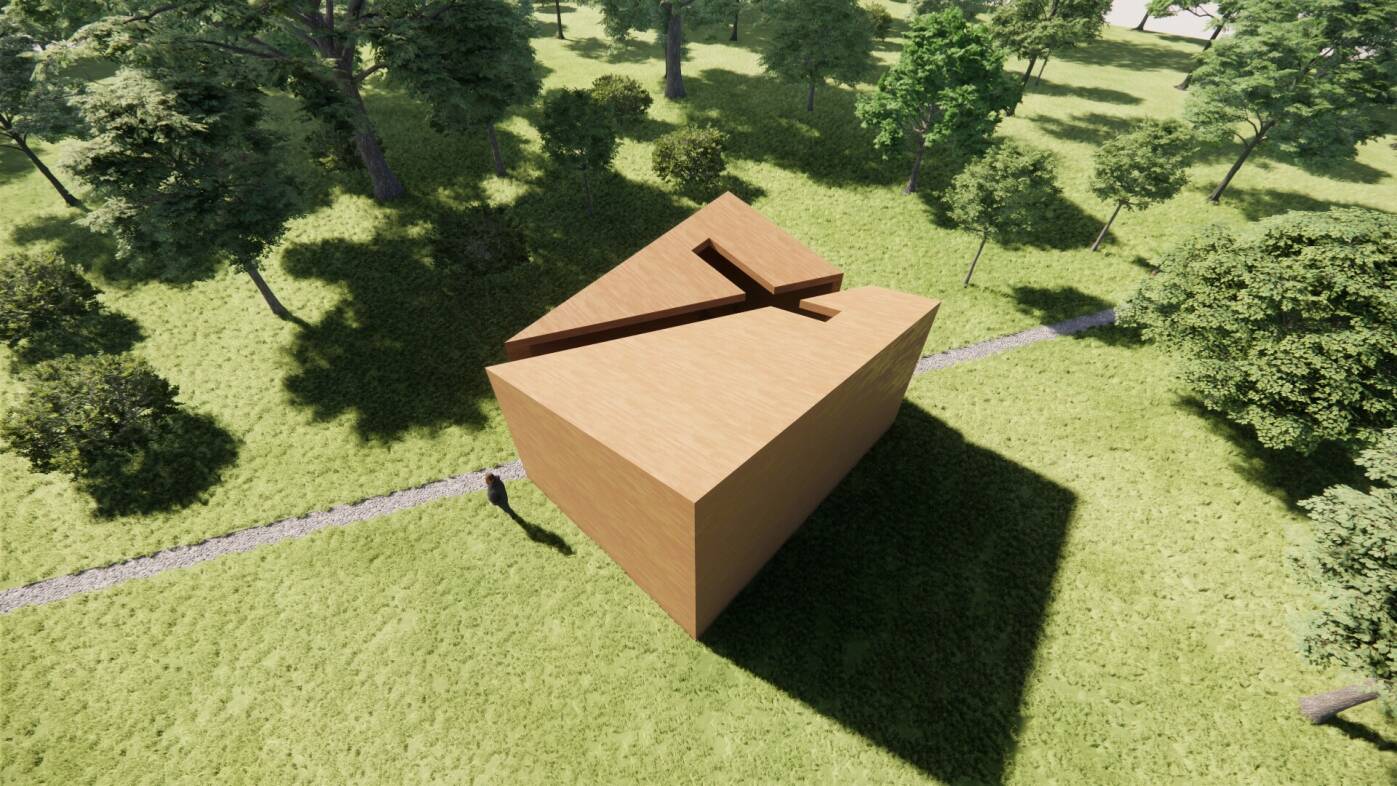

The audience, made up of over 100 students
and faculty, actively engaged with Bennett,
asking questions and offering positive feedback. The event and sponsorship demonstrate how high-profile speakers and partnerships can amplify the SLB’s message into mainstream forums.
Bennett’s talk kicked off a yearlong partnership between Studio Kër and the SLB. The collaboration also includes work on a chapel and traveling exhibition featuring a CLT form used for education and dialogue related to preserving Black historical and sacred spaces.
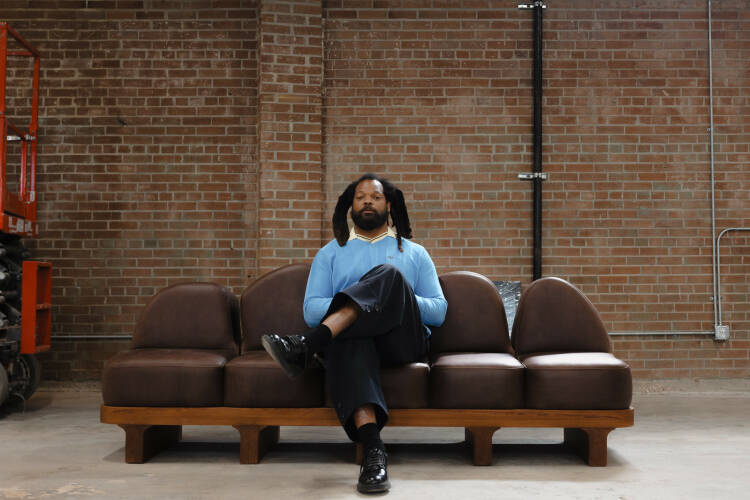
A year-long partnership with Super Bowl star-turned-designer Michael Bennett’s firm Studio Kër is showcasing innovative uses of lumber-based building systems.
SLB Education and Think Wood secured a speaking opportunity for former Super Bowl champion Michael Bennett, who spoke about his design firm’s use of wood at the Historically Black Colleges and Universities (HBCU) Spring Forum, hosted by the University of DC in March.
The former professional athlete and celebrity figure is a graduate of the Heritage School of Interior Design and is currently finishing an architecture degree at the University of Hawaii. In 2020, he founded Studio Kër, dedicated to creating spaces that “harmonize with the natural world and encourage meaningful interaction between humans,” and he is an influential presence on social media with 331,000 followers on his personal account.
During his presentation, Bennett shared insights into how his firm integrates lumber in its design projects, emphasizing lumber’s strength, flexibility, and ease of fabrication. He highlighted that using lumber also supports sustainable forest management practices and climate-conscious design.
Champion Wood Use to Underserved Communities
Michael Bennett | Studio Kër
"The need to protect biodiversity, the role of carbon in design, countering deforestation…all of these things are really the reason I’ve fallen in love with cross-laminated timber.
It offers versatility, flexibility, and beauty and allows for big installations while reducing energy consumption and being a viable alternative to traditional building materials."

Light-Frame Lumber Construction





SLB Story 4:
Overcoming Code Challenges
SLB Story 3:
Mass Timber Accelerators
SLB Story 2:
MTC Winners Generate Insight
SLB Story 1:
Defending Market Share
In House Between Forest and Field, the architects used cedar siding as a screen around the porch that creates a sense of enclosure while allowing views in and out. House Between Forest and Field.
Photo Credit: Michael Moran
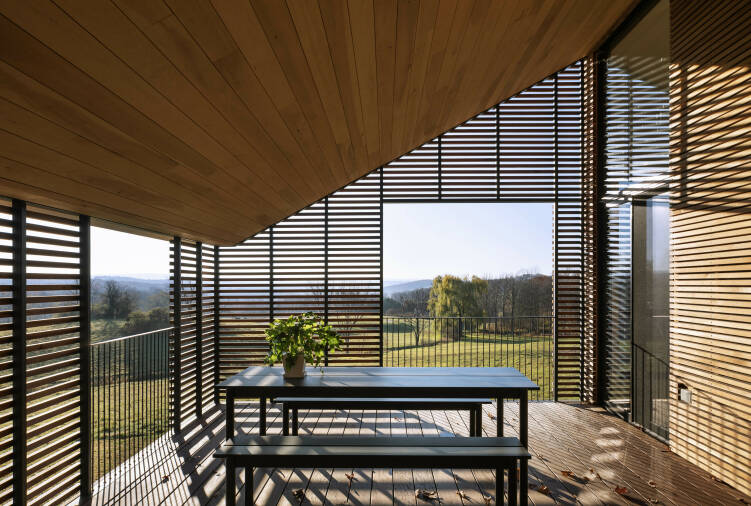
SLB STORY 1
Alongside commercial project profiles, Think Wood continues to roll out residential case studies that showcase innovative uses of wood. Not only do these single-family home (SFH) stories highlight how critical a role wood plays in the home building industry, they also demonstrate innovative approaches to using wood beyond the framing of a home.
And they don’t just resonate with the residential audience: a profile of House Between Forest and Field by nArchitects—which features wood inside and out—was one of the most popular newsletter items in Q1 across all of Think Wood’s audiences. Other high-performing SFH content included Lake | Flato’s North Fork Residence showcasing the beauty and brawn of high-tech prefabricated wood systems.
To continue the momentum and meet this ongoing demand, Q2 will see the launch of a SFH LookBook—a downloadable resource featuring compelling photography and freshly curated content—with a focus on outdoor use and wood decking. This resource will nurture Think Wood’s residential audience to protect market share and also appeal to commercial AEC users who are inspired by single-family home design.
Think Wood engaged 5,500 builders and residential contractors with informative and inspiring residential stories in Q1.
Think Wood Defends Market Share with Residential Wood Content

to Innovate with Wood





WOOD INSTITUTE
SLB Story 4:
Overcoming Code Challenges
SLB Story 3:
Mass Timber Accelerators
SLB Story 2:
MTC Winners Generate Insight
SLB Story 1:
Defending Market Share
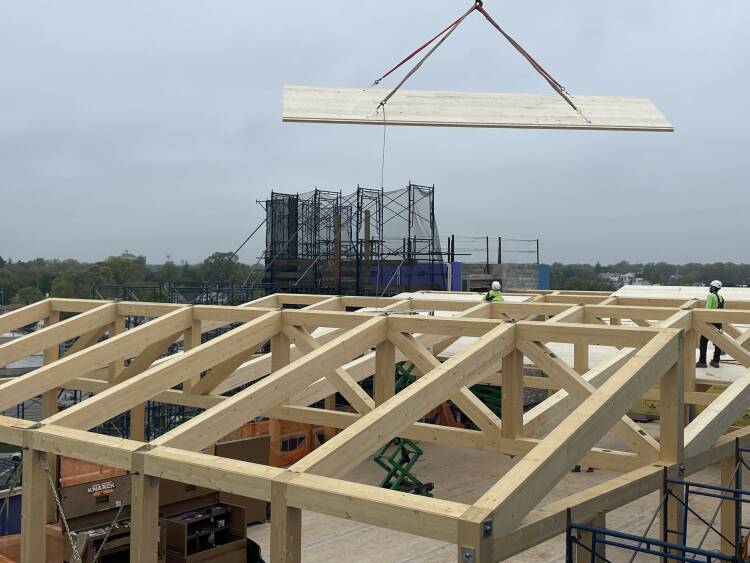
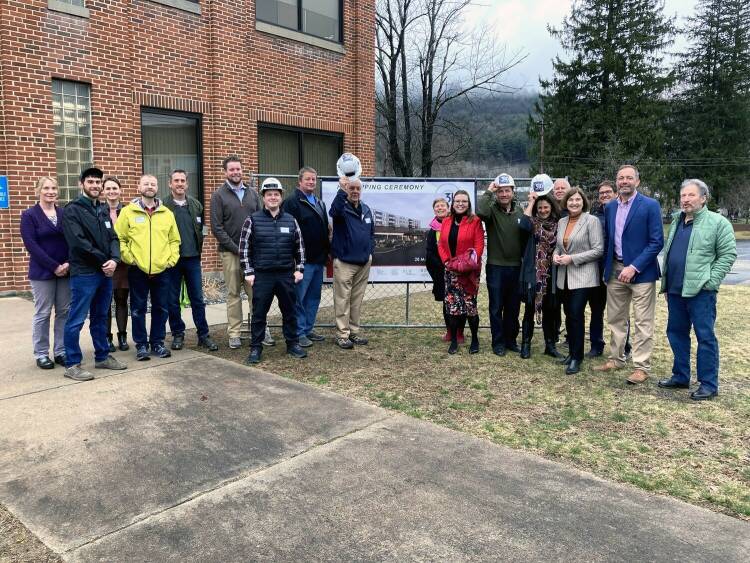
The CLT erection at Evergreen Charter School progressed in about half the scheduled time.
The UP@310 project team tipped their hard hats at a “hat tipping” ceremony to the supporters who made the project a success.
With funding from the SLB and USDA Forest Service, the 2023 Mass Timber Competition-winning project team for UP@310 Lofts is spreading the word about the potential for mass timber overbuilds in a variety of ways. Constructed as a mass timber overbuild above an existing two-story commercial building, the net-zero, 57-unit multifamily project is built using glulam posts and beams with CLT floor slabs. The architect for the project, Randall Walter, Principal at Lignin Group, recently presented learnings from the project in an SLB-sponsored webinar about mass timber overbuilds—reaching over 1,300 AEC professionals.
“Unappreciated buildings don’t need to be forgotten forever,” Walter said. “Sometimes they just need a little vision and a nudge in the right direction to come alive again. A mass timber overbuild is a great way to do that.”
Walter also presented a session in the WoodWorks Learning Lounge at the AIA Conference on Architecture in June. These initiatives show how the SLB’s individual investment in the Mass Timber Competition winners can bring additional collaborations and mutual benefits that raise visibility and provide peer-to-peer validation of the benefits of wood construction.
Another Mass Timber Competition-winning project supporting market expansion is Evergreen Charter School. The 85,000-square-foot, five-story hybrid CLT education facility with biophilic design elements broke ground in Q2 and is planned for completion in 2024.
"The cost difference between a traditional steel structure and our hybrid CLT structure is negligible, even before considering schedule savings,” Martin Hopp, Principal Architect for the facility, told the SLB. “A crew of steel workers and carpenters, with no prior mass timber experience, successfully erected it. After seeing how successful it was, they were enthusiastic about working with this approach in the future.”
The project’s success is demonstrating the benefits of wood construction in schools and will help continue to drive mass timber’s 80% average annual growth rate in education buildings.
Winning projects from both the 2022 and 2023 Mass Timber Competitions are advancing, generating insights to solve long-term challenges for mass timber adoption and expansion.
Mass Timber Competition Winners Generate Insights and Enthusiasm
SLB STORY 2






SLB Story 4:
Overcoming Code Challenges
SLB Story 3:
Mass Timber Accelerators
SLB Story 2:
MTC Winners Generate Insight
SLB Story 1:
Defending Market Share
The Walter Gladwin Recreation Center in Tremont, Bronx, was an awardee of the NYC Mass Timber Studio.
Rendering Credit: MARVEL
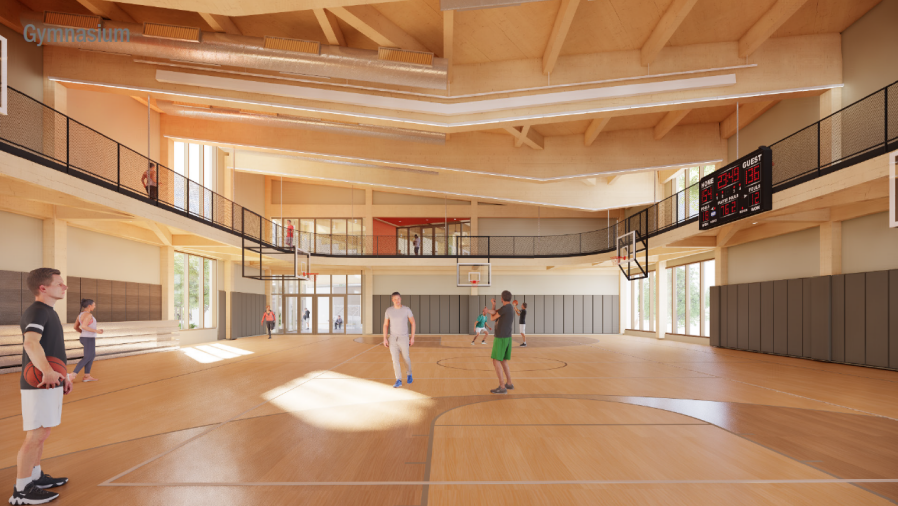
Working with jurisdictions, industry, and local governments, SLB-supported mass timber accelerator initiatives are expanding opportunities for mass timber projects, removing barriers, and streamlining code compliance in Boston, New York, and Atlanta.
The accelerators utilize matching funds from the USDA Forest Service’s Wood Innovations Grants and other programs, amplifying the SLB’s $50,000 investment to support a total project budget of $500,000.
This past fall, New York City launched its first-ever Mass Timber Studio, a technical assistance program designed to support active mass timber development projects in the early phases of project planning and design.
“Expanding the use of mass timber is a critical component to achieving New York City’s carbon reduction targets, including reducing embodied carbon emissions for new buildings, infrastructure, and major retrofits by 50 percent,” writes the American Institute of Architects New York Chapter as part of an event presenting seven projects that have been awarded in the first phase of the new mass timber accelerator program. The winning projects include four multifamily buildings, a mixed-use industrial space, a public library branch, and a recreation center.
The Atlanta Mass Timber Accelerator Program from the Georgia Forestry Foundation (GFF), in partnership with the City of Atlanta, is accepting applications through July 2. Meanwhile, the Boston Mass Timber Accelerator, launched in 2021, issued a final report finding that mass timber is accelerating in the city and region, with eight active projects totaling over 1.3 million sq. ft. projected to be constructed with mass timber materials. “Notably, two of the active projects with mass timber commitments are the initial buildings of much larger multi-building projects that will be built out over the next ten years,” the report says. “Boston’s future projects with mass timber commitments amount to 22 buildings totaling over 4.3 million sq. ft. of construction.
Mass timber accelerators in key urban regions remove market barriers and ensure maximum funding impact.
SLB-USDA Mass Timber Accelerators Help Drive Market Growth
SLB STORY 3



Propels Conversion to Wood



Leads (SQLs)
SLB STORY 4
SLB Story 4:
Overcoming Code Challenges
SLB Story 3:
Mass Timber Accelerators
SLB Story 2:
MTC Winners Generate Insight
SLB Story 1:
Defending Market Share
Rendering Credit: S&P Architectural Studio
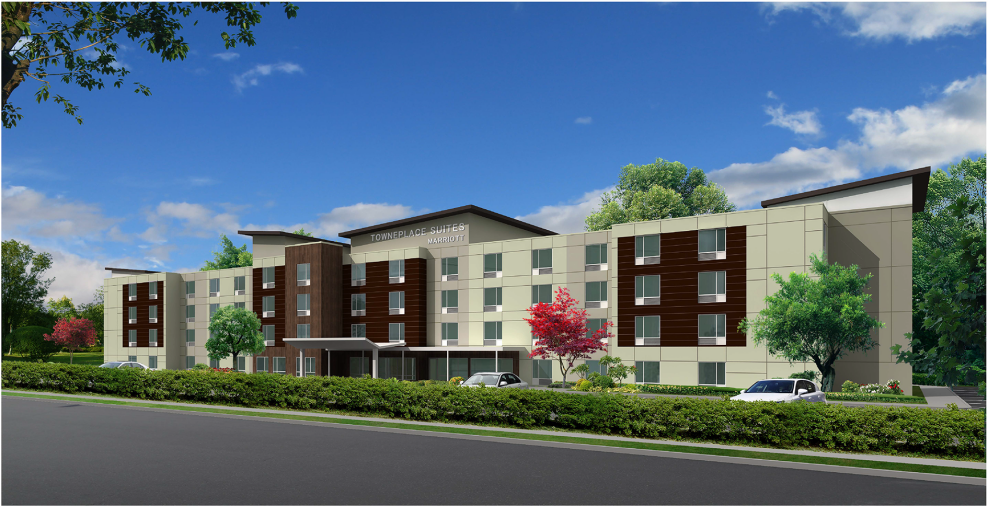
The owner and project manager of Groove Construction contacted WoodWorks when an approval issue caused delays in the firm’s construction of a four-story, light-frame Marriott TownePlace Suites hotel. The city plan reviewer believed that the building code limited their construction type (Type V-A) to a maximum of three stories, despite a letter supporting the plan from the project’s structural engineer.
A WoodWorks Regional Director and a representative from the AWC met with Groove together to discuss options for the project. The two SLB programs agreed with the project team’s code interpretation and suggested clarifications to share with the city. The reviewer was receptive to the comments, and ultimately approved the 67,000-square-foot hotel, which will use 13.2 BF/SF.
Project teams supported by WoodWorks generally go on to build many additional projects with wood, a fact that was particularly true in this instance: Groove Construction had three other light-frame wood projects on hold because of the code issue, all of which were able to move forward thanks to the cooperative efforts of WoodWorks and the AWC.
WoodWorks and the AWC Help Overcome Code Challenges for Light-Frame Hotels
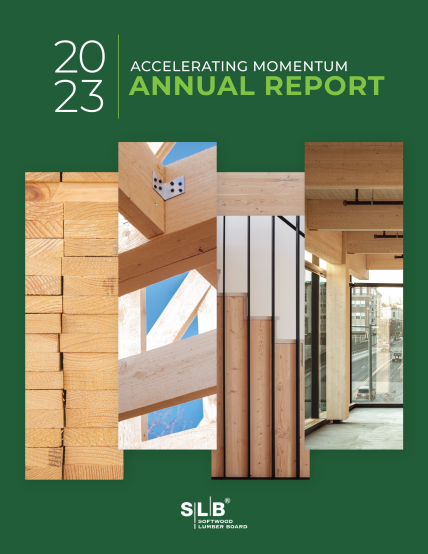
SCROLL TO TOP

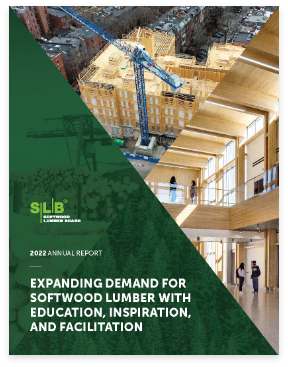


of the Impact of the SLB
If you'd like a printed version of the
Q3 Report mailed to you, please email info@softwoodlumberboard.org.
















